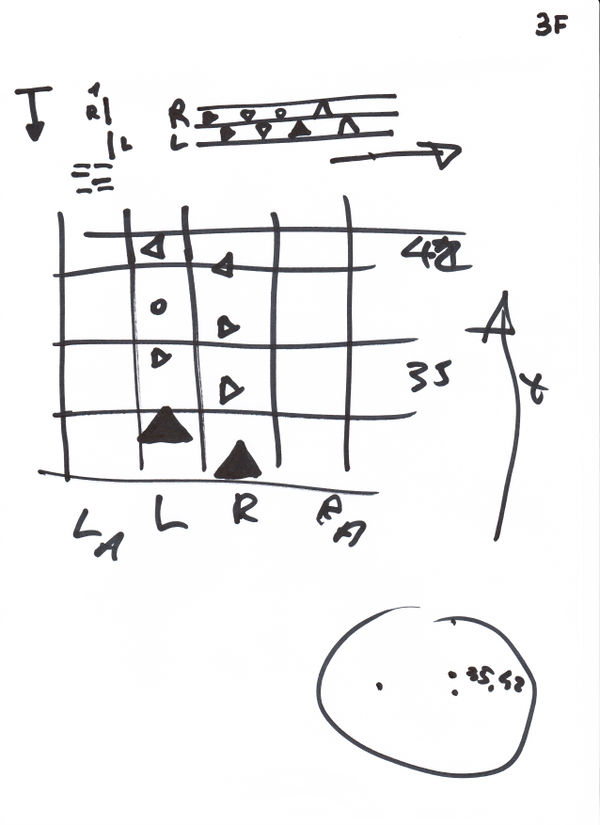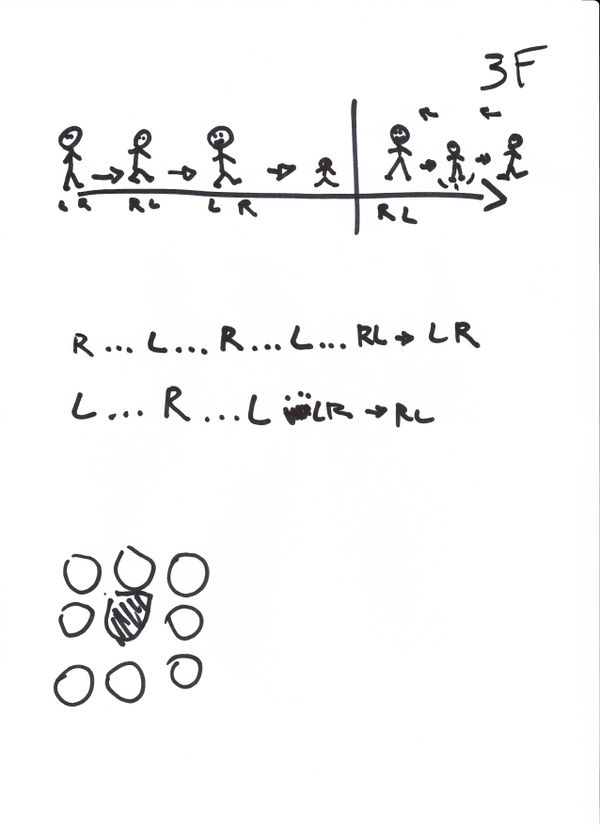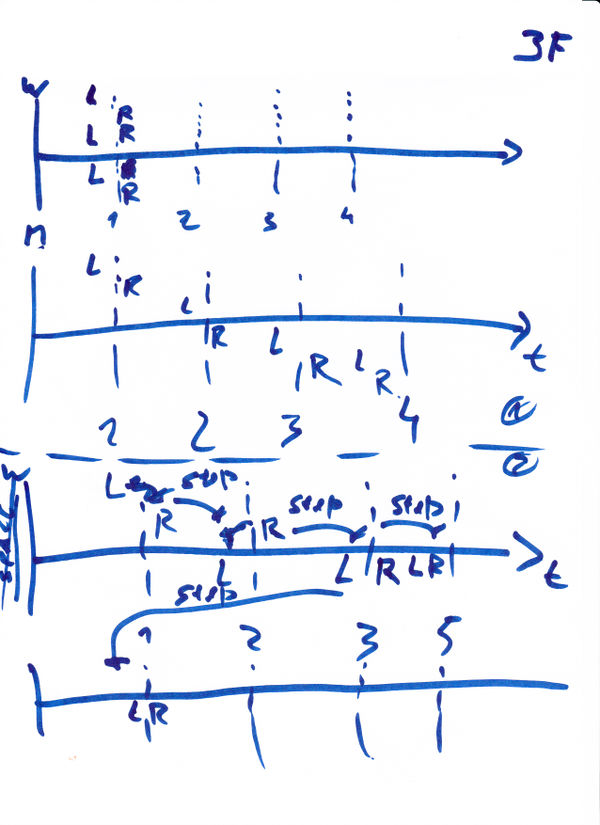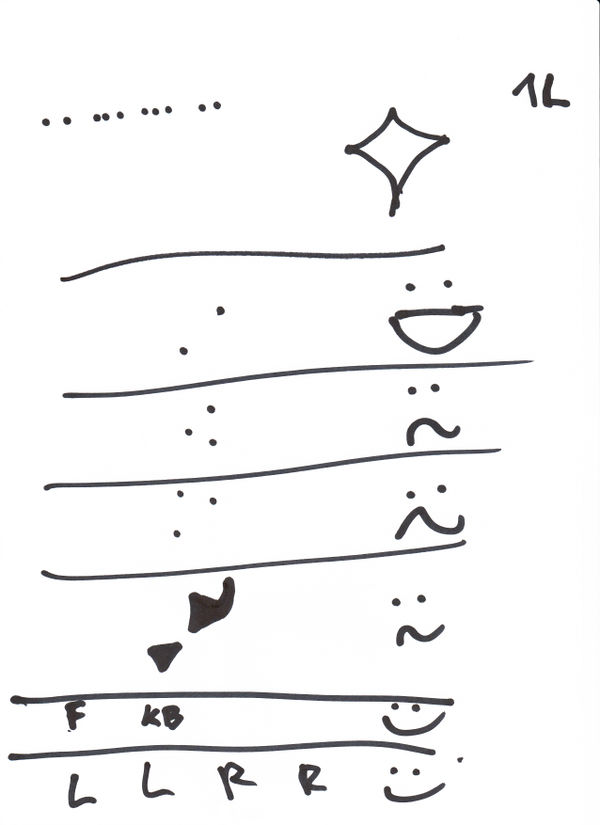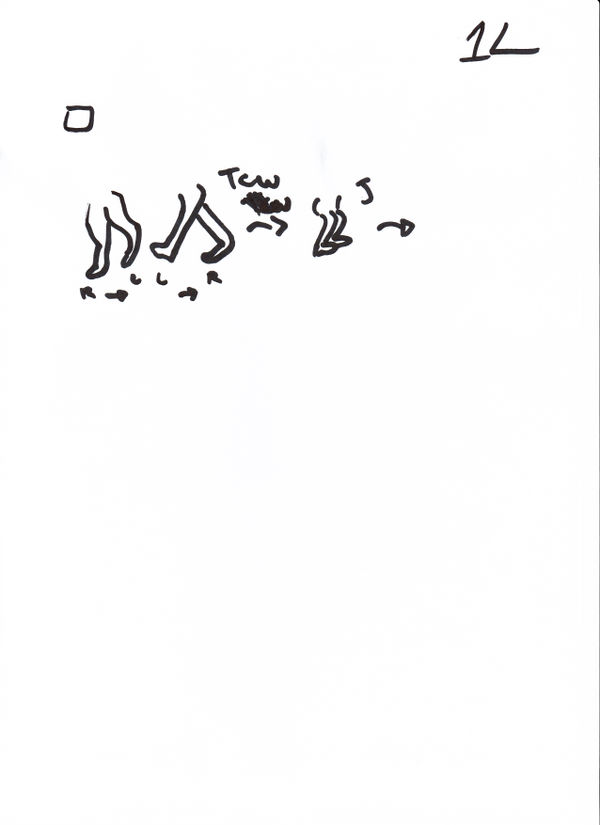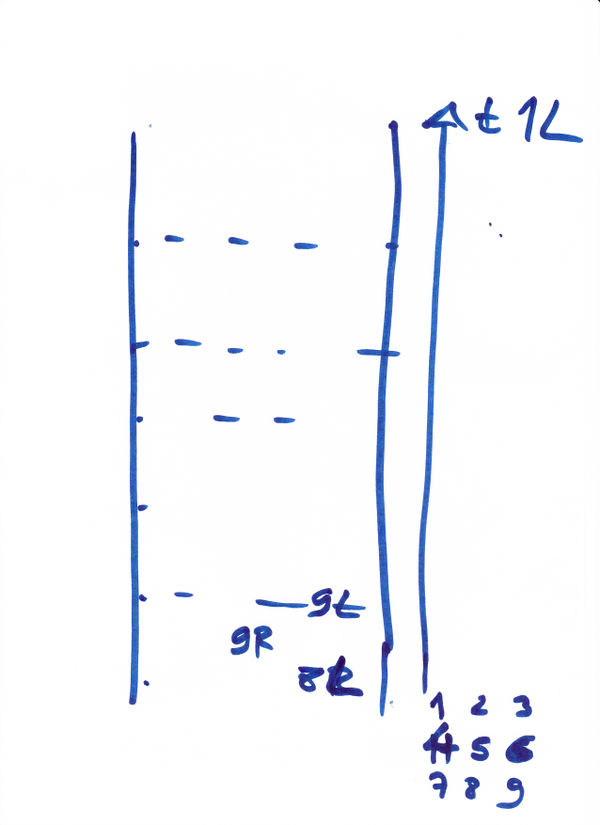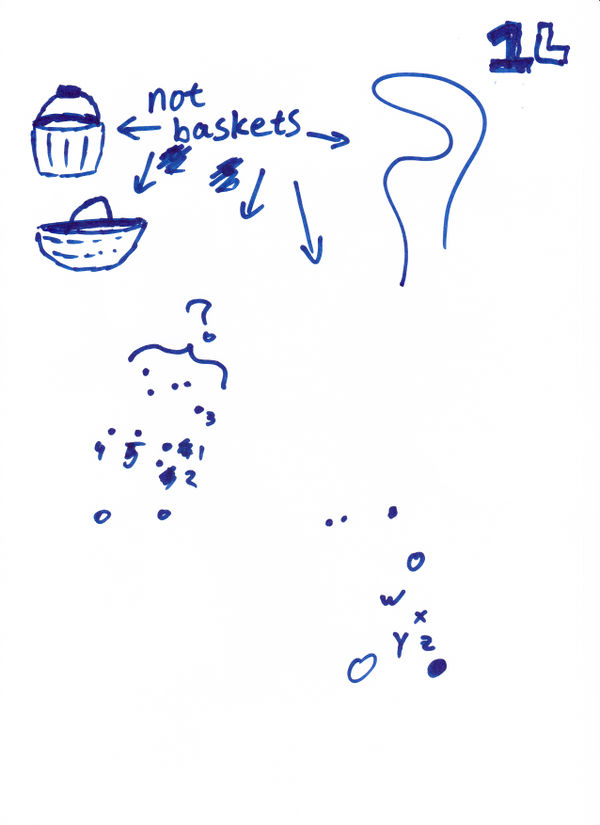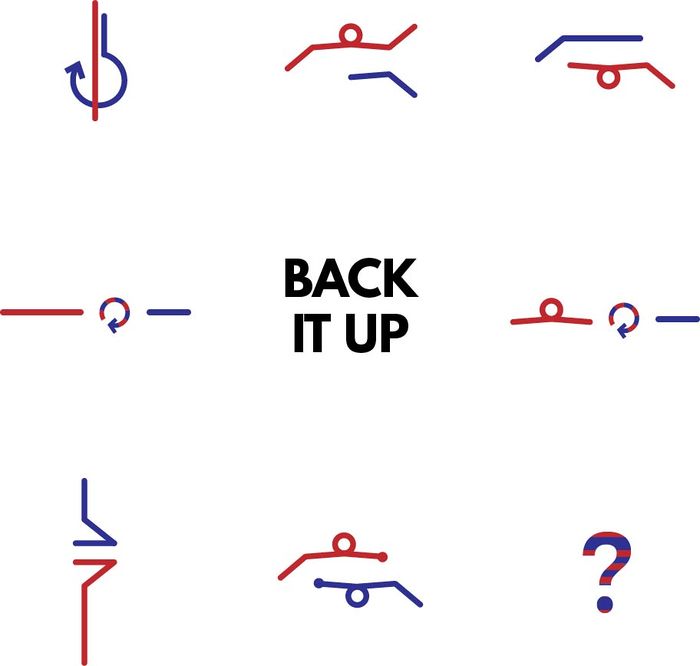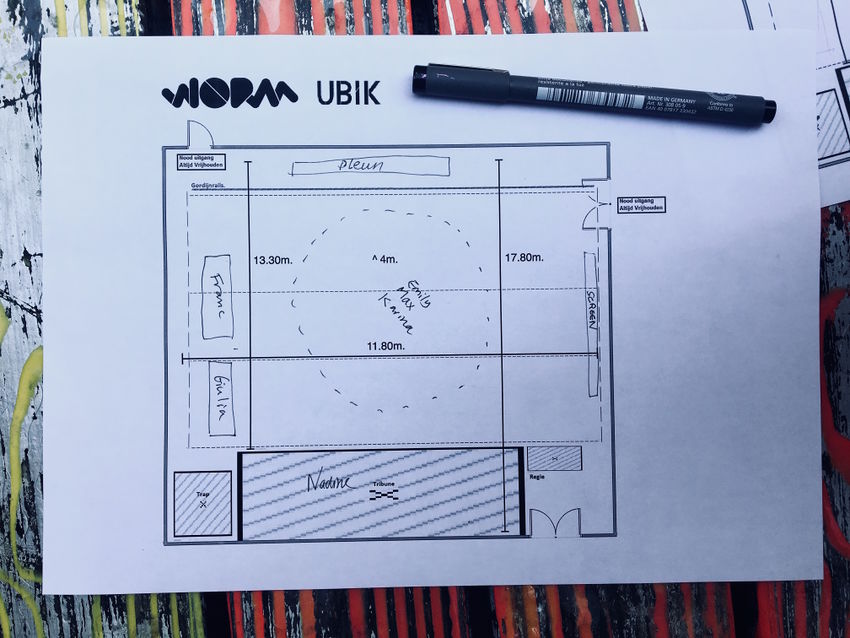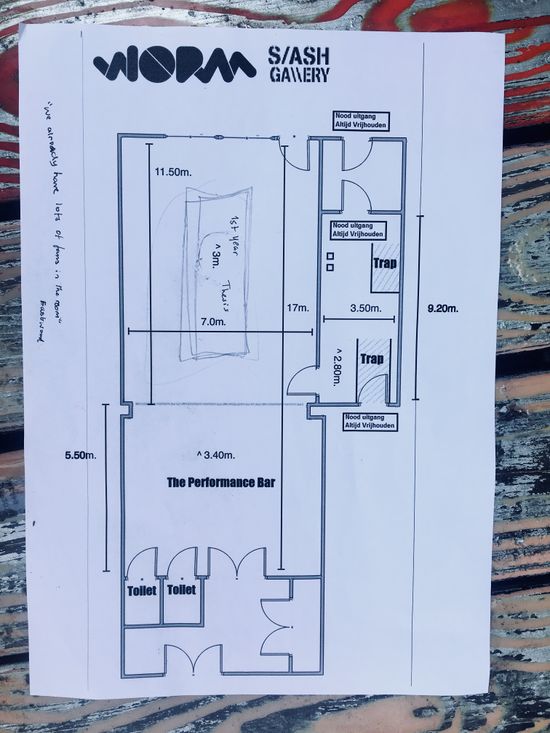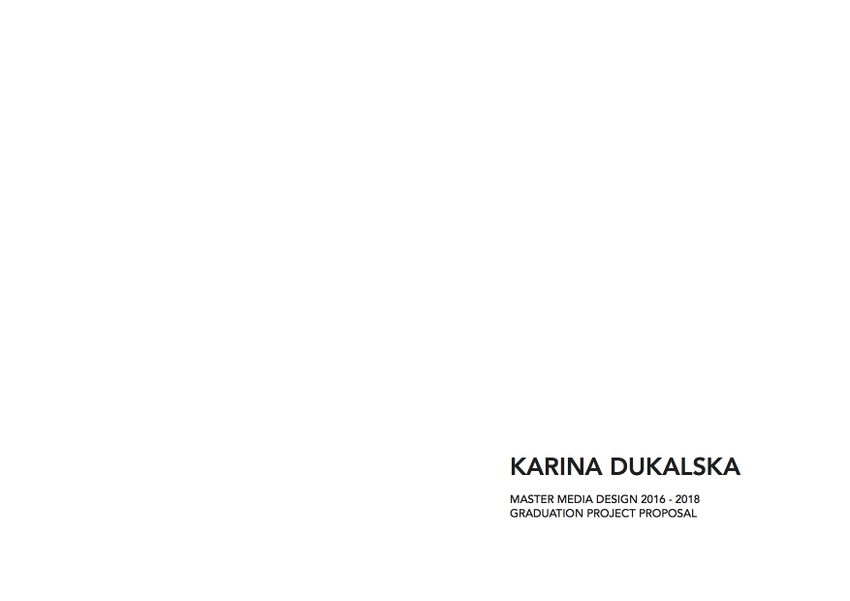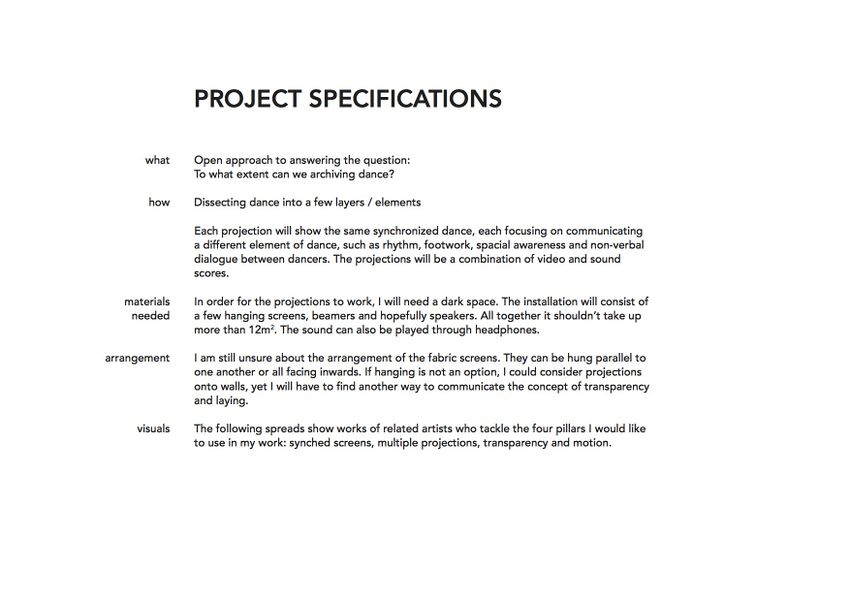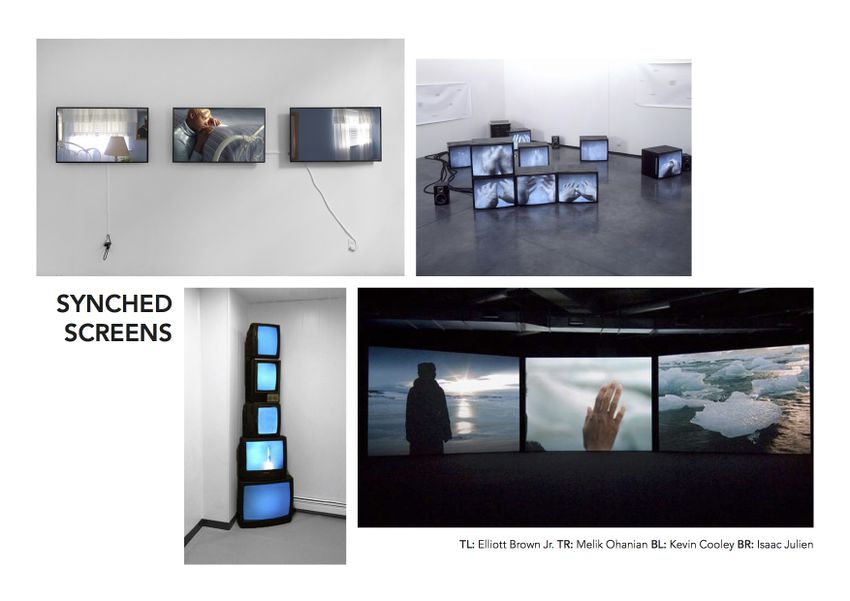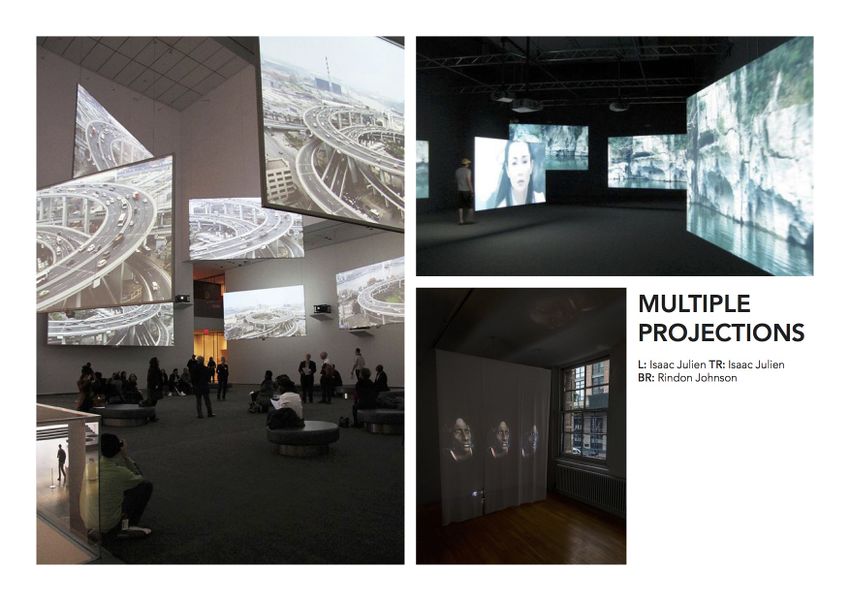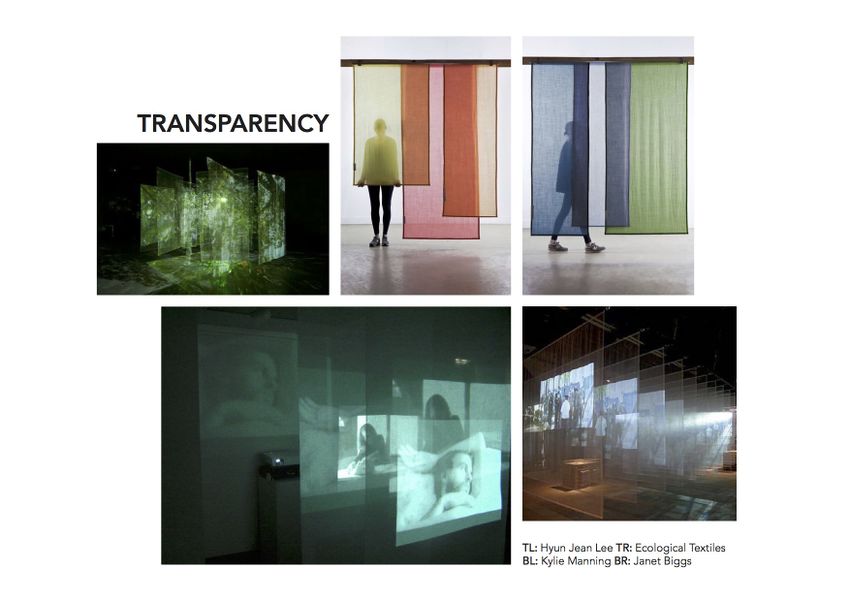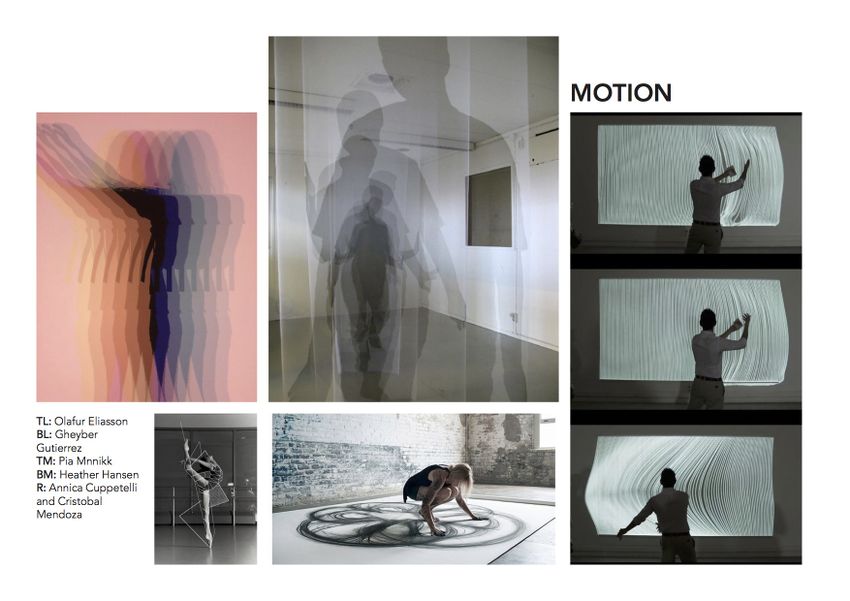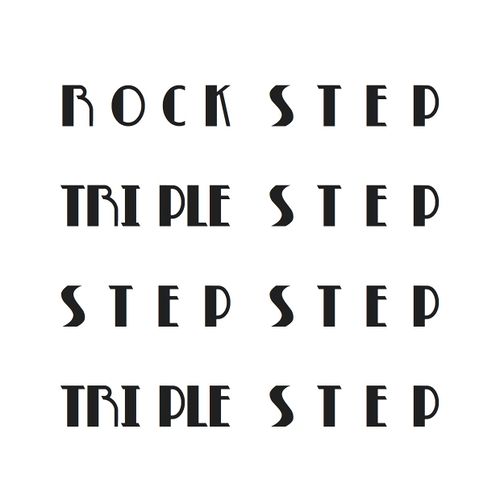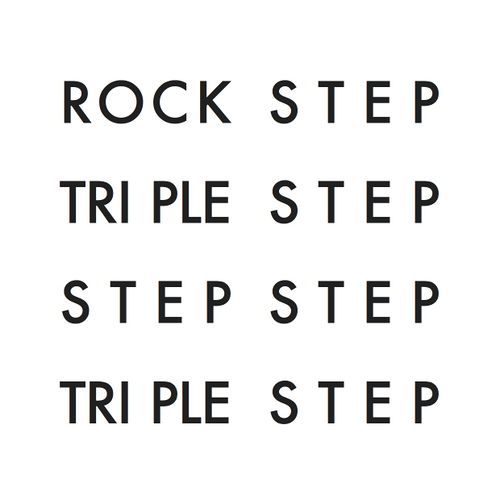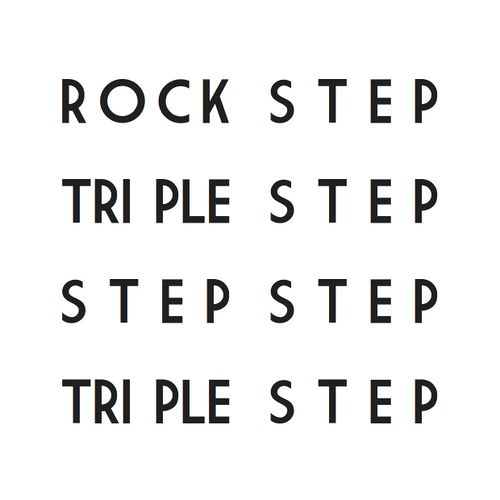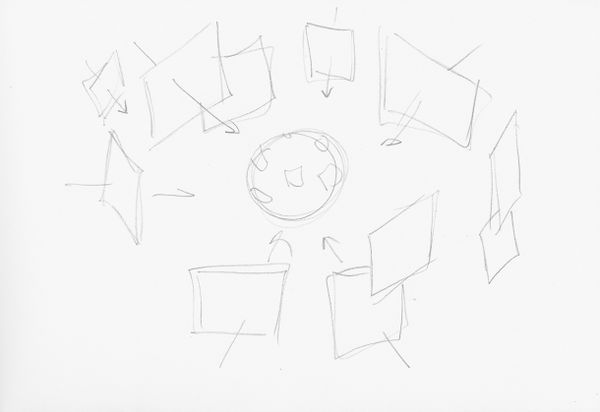User:Karina/graduation project
notes from Karina/self-directed/Capturing Memories In Time
previous written piece: Time Perception in Dance
1 JULY
trimming the mp3 files to shorten the delays between pressing a button and hearing a command
- tried to do that with audacity - had problems with installing LAME
- successfully trimmed the files using QuickTime
11 JUNE
pad with audience's response to dancers' non-verbal dialogue and atmosphere in the room
5 JUNE
4 JUNE
Notes on how code for web was written
code for Back It Up web interface
Meeting with Aymeric
- cd no web
- ls
- ./start_test
- ctrl+C to close
to do
- install chrome / firefox onto iPad
- redo test
check how to create iOS wifi hotspot to tablets - won't need pi
Meeting with Andre
pad: grad show material list
Need:
- VGA adapter (from mini display port) - ask Franc to try his
- prepare birds-eye-view clips ahead of time
- arrange overhead projector with Leslie
- place index.html into cgi bin
- follow R Pi Guide on wiki (3.2 web server)
3 JUN
How minimal can the traces get to still communicate the step?
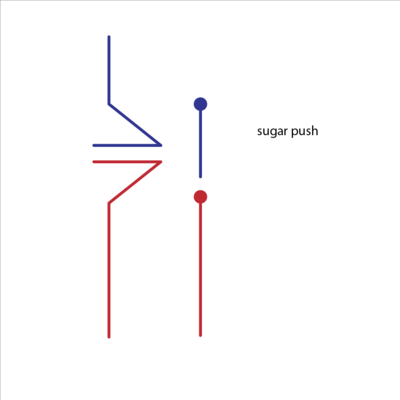
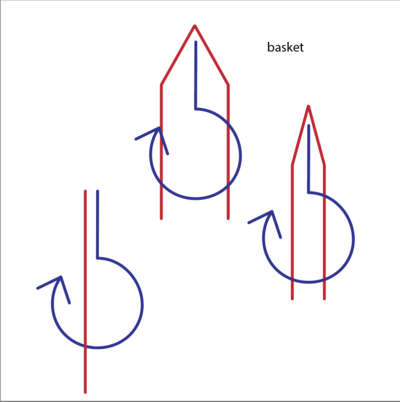
web buttons
- 12px
- more space between lead / follow lines
- thicker turns
- presentation order
- kizomba
- swing revival
- show different notation systems
- pro / cons of each
- ask audience how they would interpret them
- dance & score workshop
- different steps, repeat some steps
- compare same scores of same steps
- compare among audience
31 MAY
light paintings with Anna in the photo studio
photos taken from birds-eye-view
white light traces the steps of the lead, red light traces the steps of the follow
lights were attached to shoulders, as light from the feet wasn't recorded well - information was lost due to covering by rest of body
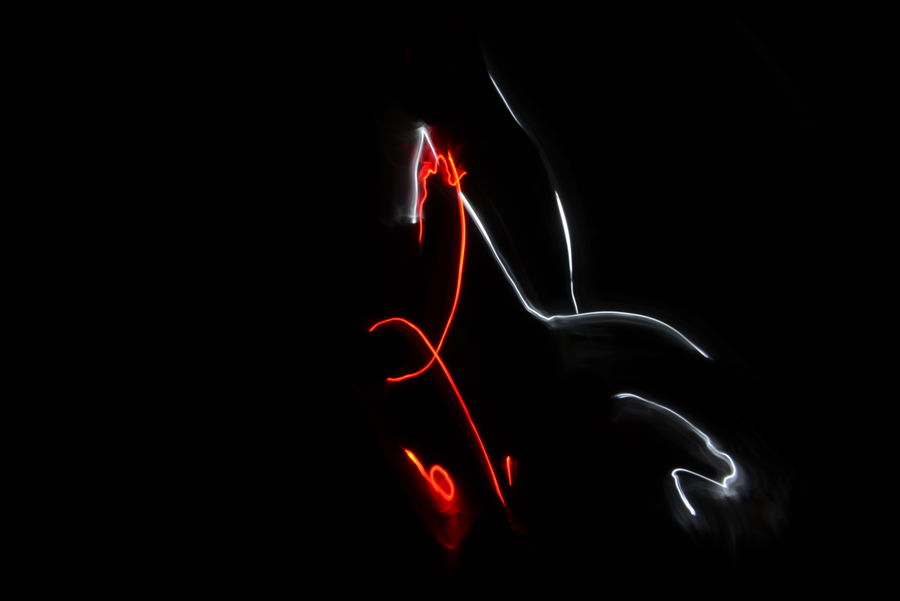
Step name: Minni Dip

Step name: Basket
28 MAY
Meeting with Michael
final project = collected recordings / perceptions of experienced performance
do it beforehand, not during assessment only
performance is project, needs to be shown at assessment (some element of it)
connect all tablets to my computer
create network - hotspot
no floppy as before, just pi (server)
for assessment
- good to show process (evidence)
- show trials
- show collection of results
24 MAY
meeting with Anna
record performance
- video birds eye view
- video audience perspective
- audio of audience
- audio of footwork? (will probably be too loud to hear)
try
- long exposure movement trace with Anna
- instructions on boards in space (instructions for recording footwork will be closer to the dancers and lower to the ground?)
"I'm feeling lucky"
roll digital die to get your instructions
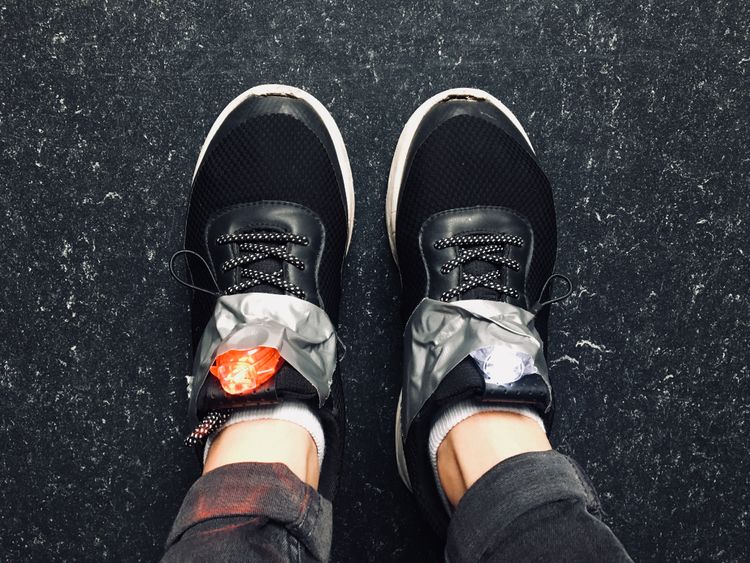
17 MAY
Meeting with Delphine
what is the materiality of the event?
according to me, this is how my work should be preserved. recorded does not mean more valid.
Ian Kapprow - script to repeat performance
- before: planning
- during: recording in different forms (software / props)
- after: trace of performance
Joan Jonnas
preservation becomes the work
That's my statement. How it should be recorded, this is what I want it to become
Each section has different role
- Group 1: instructions using buttons
- G2: record / trace
- G3: interpretation?
- G4: record crowd / room / atmosphere
- G5: record connection / non-verbal dialogue between dancers
pieces of paper with instruction / give choice?
how do you communicate this in your practise?
- book to performance
- manual / companion
16 MAY
Meeting with Florian
Rem Koolhaas
flip book - score
blue to red gradient change showing movement in time
hybrid of workshop and graphic design
workshop will disappear (not a form of archiving)
preserving is goal, not teaching
manipulating score to document experience the way it was perceived
video, graphic design, workshop, scores (all have pro / cons)
- make hybrid of pros
Notations assembled by John Cage
15 MAY
Meeting with Michael
This is what I am visually aiming for:
Jitterbug Dancing 1944 Vintage Instructional Movie Video HD (4:30)
YouTube: Kenny Kong - Body Tags using the Kinect
OpenCV Track Object Movement
Sensor Fusion for Object Tracking
opencv sample
Choreographies for Humans and Stars
non of those are quite what I'm looking for
pip opencv - python
possibly not pi
- it's slower
- limited
work with webcam
suggested by Pleun
Magic - Download Free Magic Demo
14 MAY
30 APR
Lindy hop brainstorming with Lucien
wikipedia: List of Lindy Hop moves
basictuck turn- it's a closed to open step- change of place
- swing out - open to open
frankie 6s- sugar push
- basket
- texas tommy
lindy circle- sweetheart
- minni dip
These both look like the presentation-workshop-performance I'm preparing for my graduation project
Planet swing -- the real Harlem Globetrotters: Ryan Francois at TEDxAlbertopolis
Jitterbug Dancing 1944 Vintage Instructional Movie Video HD
could have additional buttons for
- style (like Ryan's Ted Talk)
- moods (serious / goofy)
- posture
- bunch
- size (steps or upper body movement)
- stretch / stiff
- no hands
- solo
presentation -> workshop -> performance
- difficulty in capturing experience
- graphical notation systems
- drawing session + comparison
- my solution
- performance
- + history of swing / revival
- + context (spirit moves / kizomba)
- + not just 'vanilla' steps (swing is improv)
workshop idea:
- audience draws swing out + compare
- dancers interpret notation systems
feedback from Zsofi (was in control of buttons / dancers during trial)
- need to know moves earlier
- 1st try is random, with time begin to design
- solo gives time to refresh
want to convey the excitement as the audience (in film and at home) have.
I want the audience to interact / feel / laugh / jump / scream
Lone Star Championships & Lindyfest 2013 Invitational Jack & Jill - Michael Seguin & Frida Segerdahl
Thomas & Alice improvisation, Olivier Franc quintet, Comedy Club, Paris, 2012-10-28
experiment notes:
- minni dip + sweetheart are cross-hand positions (might be harder to connect with certain steps)
- 1st trial was random for audience
- by the 3rd they understood & designed
- saw solo as a moment to refresh / restart (works the same for dancers)
- solo might be abused
- frankie 6s is a combination of steps - won't work
- tuck turn closed to open - doesn't work
Zsofi used mini dip often, so I asked what she liked about it.
- the clap + spin
- could learn it
- distinct enough
Other notes
- could learn one / any step when repeated one after another
- sugar push not as exciting because small step / not much happens
- minni dip is big / 'go full out'
Laysan Albatross Courtship Dance
25 APR
Meeting with Michael
film from above - pi
software to trace automatically
instructions (SI02)
score performance
16 APR
Meeting with Delphine
design is my medium - most important!
buttons not steps, but elements
- remoulds dance
- 'faster' 'smaller' etc
- allows for lead to think of steps
- 'turn left'
what do you want the recorded work / performance to be?
the recorded work becomes the work!
contradicting to have video if against video and talking about needing notation
- how many cameras?
- how to record?
- record interaction?
what is the status of the archive?
what is the relation between the performance and archived material?
Stanley Brouwn - directions on paper
Allan Kapprow - the props are not the work, the performance is. the script became the work
11 APR
File:Pro con of si02.pdf
Meeting with Michael
documentation tool of experience
overhead camera, view of performance
difference in point of view
live trace?
presentation -> workshop -> performance -> documentation
what / why do we document
capture moment in time
immersive performance
putting audience into flow of responsive performance
snowball? as a means of drawing audience in to perform
falling into flow without dancing
quantifying parts of memory to document experience
Maria (Greek)
laban keyboard + performance + recording (projected from same space)
strict ballroom, cunningham, improv
each time step will be different
decode / practise / use / abuse
rubiks cube even has notation system
algorithms U'
make performance more abstract
no performance with 2 dancers? audience?
with shapes
abstract dance / movements / gestures
recording co-constraucts the experience
birds eye view trace
not done by software, but people on paper
have many people try / subjectiveness is important
view step, annotate it, reconstruct it
machine learning similar progression
show ballroom steps to swing dancers
have them notate and reconstruct (idea for later)
recording the intangible and how to perform it again?
- out of context?
- to different music?
test:
- birds eye view recording (pi + camera)
- have people notate steps
- think about workshop ideas
- 5 bullet points of what's most important to communicate (concept)
Michael's notes
Going back to the performance of T2 last year.
- presentation
- to workshop
- to performance
camera bird's eye view...
GOAL: increase audience's connection to the performance, "immersion" ... also about putting the audience into the flow of a responsive performance.
The "Snowball dance" ... as a means of drawing in (literally) your audience to start dancing / performing.
Images + Performance = Symbol
decode practice use / abuse
subjective annotations
- Ulimately it's about co-construction of memory and notation
- and the problem of "recording the intangible" (and who/how is the recording performed )
- About how multiple representations is better than one
? have an overhead camera + a station to make drawings, then later perform the drawings
Example of Film to Film movement (Rotoscope of Cab Calloway ... Betty Boop Cartoon (Snow White))
https://www.youtube.com/watch?v=Kwg-MfEwoAM
Some tightrope...
https://www.youtube.com/watch?v=pwnefUaKCbc
Use a Raspberry Pi + Cam as a Network camera overhead view??
(Or let people play with the camera position as part of a workshop ...)
Rubik's cube Notations + "Algorithms"
https://www.youtube.com/watch?v=1t1OL2zN0LQ&t=1996s
(thinking again of Alan Kay's "Doing with Images makes symbols")
22 MAR
feedback from group crit
group crit 12th March, 14th March, 21st March pad link
presentation is clear
tool to understand dance for myself - is that still the goal?
is it one dance to show to the public how difficult it is to score it?
G: what is being recorded?
P: is the public dancing? is it only for dancers?
E: synced screens not necessary?
P: graphic design question. how do you present this data on the screen?
G: can we systematise dance?
A: reinterpretations, Cunningham, what makes a piece reconstructable?
E: installations can do more. projections can pick up movement
motion recognition, capture something from live audience and play it back. “look you made a movement”
P: why is the projection on wall, not floor? follow the lines, visual connection
A: no discrepancy with previous work. player was playful and awkward, there was dialogue
P: at first notation with everything, now split into layers
G: thesis says you cannot archive it all, project does’t show flow, non-verbal communication, culture. play more with the fact people don’t know much about dance.
P: is the main question to show it is / isn’t possible
(pleun understands that) at first it was possible, now see not possible
A: it is so strange it’s not possible? push it, make it strange
P: why only 6 elements? overflow audience with more
P: is video not the perfect method? is it not the answer?
A: if you’re copying Cunningham’s piece, you’re doing it wrong
A: tech with high res- never endless story. Football, sports,
P: fast walking - if you film close enough, sport goes to shit
—
E: avoid STEIM - contact one person in particular
P: avid MAX - intense learning curve
don’t go into motion graphics
focus on graphic design
attach pens to shoes, have people draw with their feet on the floor
use involvement and movement
studio moniker (?)
score of the rules that they made
"I’ve been looking at how we can map down movement. this is yours!"
- have something visual
- different instructions for different people
- one group rhythm, one group footwork, one group movement - orchestra
- outcome of installation slightly changes
- provide audience with score / tool
- connect people
“I got a dot and 2 squiggles. what did you get?” interpreting movement
20 MAR
Meeting with Delphine
The Private Is Political Legwear by Beau Rhee (Delphine's former student)
Médiathèque et collections
Centre National de la danse Médiathèque
Archives Liées À Rudolf Noureev
Sinology Institute
14 MAR
Neat version of grad project sketch
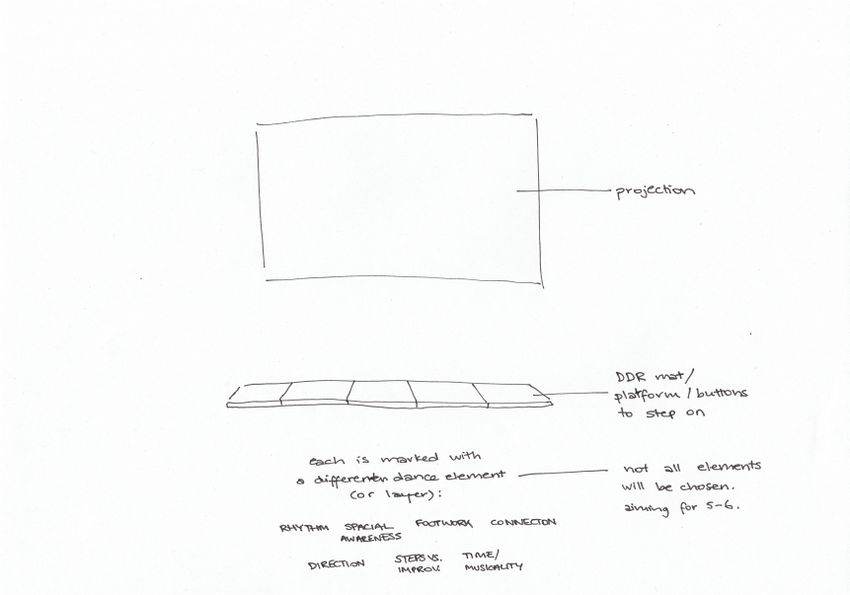
12 MAR
Grad Show meeting with Aymeric, Simon and Leslie
9-10m2 each
probably squared area (3x3m)
show at PZI 4th floor
7.5k visitors last year
5 MAR
Group meeting with Aymeric
16 FEB
8 FEB
YouTube: Masonic Animal Projections: VICE Labs
5 FEB
Grad Show meeting with Simon and Leslie
3 day festival
- PZI / WdKA (Wednesday 4th July, till Sunday 8th)
- HNI (Thursday 5th July)
- Kino (Friday 6th July)
26 JAN
Talked to Rob from Sound Station
- build wooden platform (doesn't need to fit into small recording booth, can be big to place in the middle of the room)
- rent microphones and cables from store downstairs
- don't have binaural microphones
- can always record from 4 microphones and play from 4 speakers
- use max (msp, jitter, large data) to combine recordings together
- use one file with 4 streams and diverge into 4 speakers - using one computer that way and you know it will all sync
info from store
- it's called a Zoom recorder
- can reserve ahead of time - wdka.rental@hr.nl or 010 794 47 74
- they have 8 mics, so renting 4 shouldn't be a problem
22 JAN
Meeting with Michael
More excited to make thesis publication than graduation project

Go back to making quirky books
https://www.kickstarter.com/projects/551648271/papier-machine-vol0-the-interactive-electronic-pap?ref=pl979s&token=97c680b6
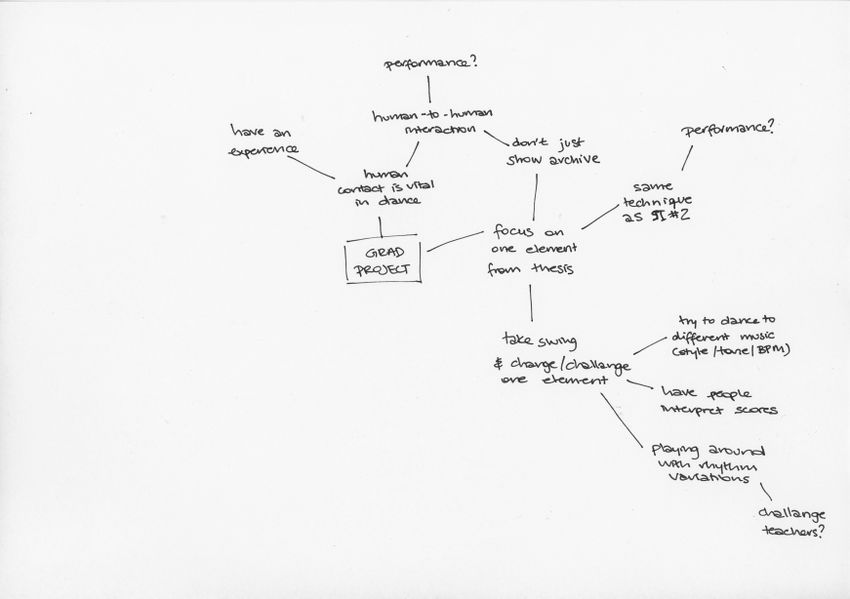
Performance or not?
test documentation of dance
the project focus should not be about form, but depth
substance: sound of footsteps
go back to layers
one dance in different ways
experience same dance in different ways
there's no single documentation
multiple ways / perspectives, showing slightly different stories
(highlights something another element doesn't. "this one can show rhythm, that one cannot, but focuses more on shape")
https://guttormsgaardsarkiv.no/node/10/item/1891
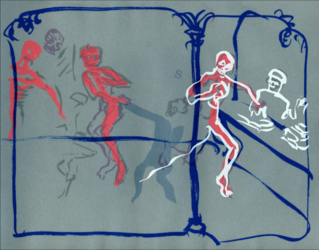
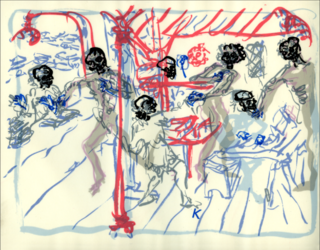
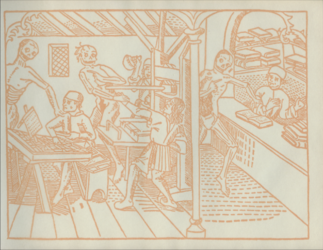
gather material!
- collect images (people's scores)
- film foot (limited gestures, not whole dancers)
- record sound
retrace people's scores
- better quality
- make them uniform
- my perception / interpretation of their work
Laughter at [01:46]
https://www.youtube.com/watch?v=aNLsUUnfTxM
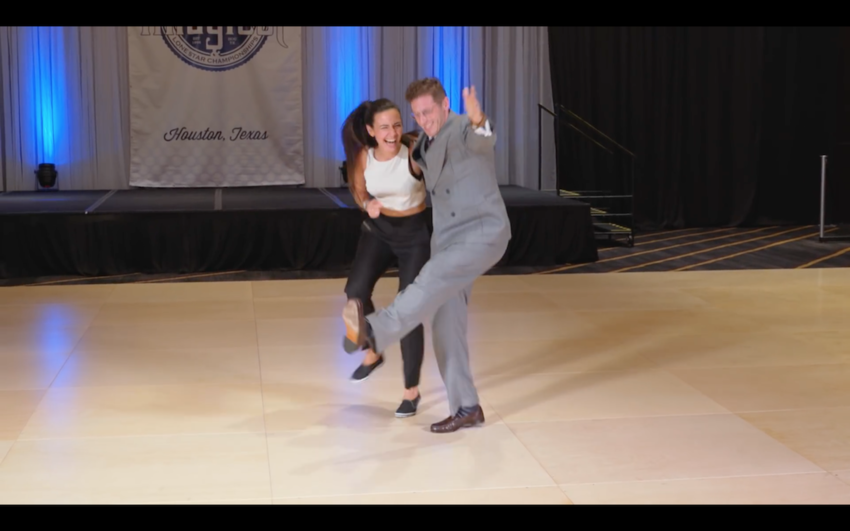
deconstruct a 2 minute dance
nodes to know where you are
a clap / something falling / a laughter
Discursive Selves
Excerpt from In the Vein of the Father by Elliott Jerome Brown Jr.
highlight dialogue
2 silhouettes changing colour - highlight when she initiated / made variations
decode with numbers
ball passes back and forth
similar to previous project: Decode
QR code -> turn into own code
connect print / book to video
augmented reality too much tech with possibly less effect / dry / industrial
put collected material to thesis too
can start with decoding a Jack & Jill from YouTube, but do make it personal (own footsteps rhythm recording?)
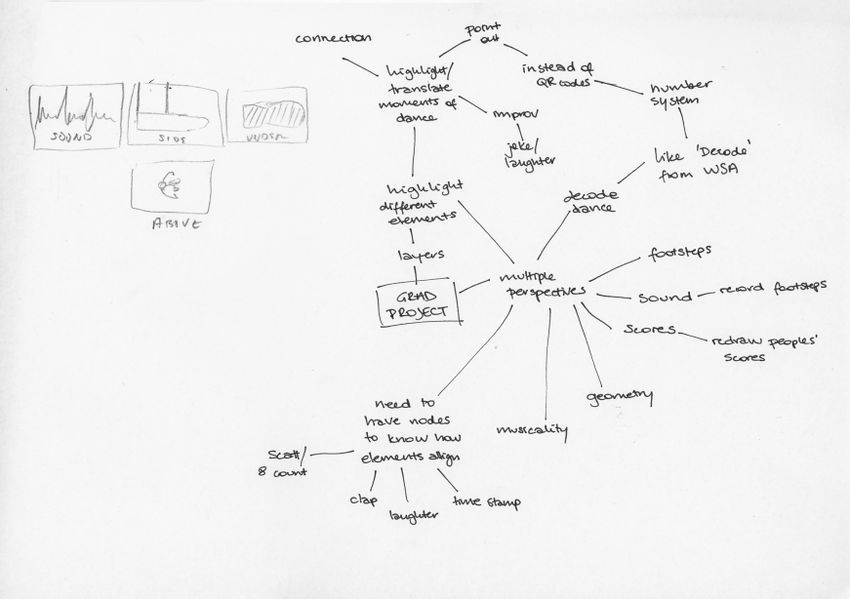
26 DEC
This Week in Swing NYC: December 22 – NYC Swing Dance Update
Friday, December 29, 7-11pm
- Fleur Seule – Tavern on the Green (Central Park West & 67th St.)
- As always, no cover.
Tuesday January 2, 7-10pm
- Svetlana & the Delancey 5, Roxy Hotel*, 2 Sixth Avenue
- No cover
Thursday, December 28 / Thursday, January 4, 9 pm - 1 am
- YSBD 412 8th Ave, 4th Floor, New York, NY 10001 (near 31st St & Penn Station)
- $7
- http://www.frimframjam.com
18 DEC

6 DEC
Meeting with Marloes
left & right (red & blue)
- are footsteps / footwork necessary here?
- footwork could be another graphical system
- 'pop pop pop' poster is intuitive
- red & blue isn't
'digital interactive installation'
- open to 'installation'
- people focus more on learning the interface then enjoy the interaction
"large-scale installation showing multiple / different approaches attempting to answer research Q - something so immersive as dance"
on assessment day say "since deadline I've changed so and so.."
multiple purpose tool - no
many approaches / layers - yes
Varinia - ask about walking in rhythm
walking tours / silent disco
document workshop at Poortgebouw on 8th Dec
- it can be another experiment
- helped out individuals, but never taught a class
- never taught with Floris, need to understand each other, be in sync while teaching
- make list of tests (scatting, leading..)
- ask what else can substitute words "rock step triple step"
archive experience -> swing -> memory, flow, notation -> culture and language mentioned briefly to understand background
thesis as a muni publication that goes with graduation project
creating mini tools
5 DEC
IFLScience: 70 Percent Of People Say They Can Hear This Silent Gif. So What The Hell Is Going on?



Am I able to make a silent graphic that seems to making a sound / a rhythm?
27 NOV
Meeting with Andre
"communicate rhythm typographically"
- don't say you are making a 'poster'
- mapping parameters of dance onto typographic parameters
Interesting that you don't know what happens with L & R foot in rhythm experiment (it's not wrong) - let people interpret it
connect score / rhythm to typography
YouTube: Triadisches Ballet | Triadic Ballet by Oskar Schlemmer
https://pzwiki.wdka.nl/mediadesign/Graphic_Scores-avant-garde
any similarity in artistic movement (time & place) Futura, Bauhaus, Triadic ballet?
association with graphic design & typography
can system to archive dance be system to design typeface?
divide text into red and blue, just like in the rhythm notation system
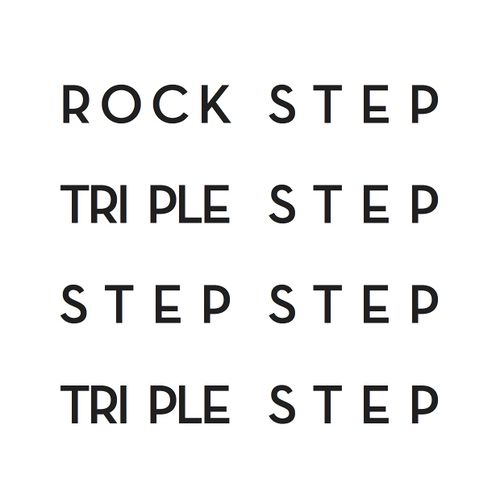
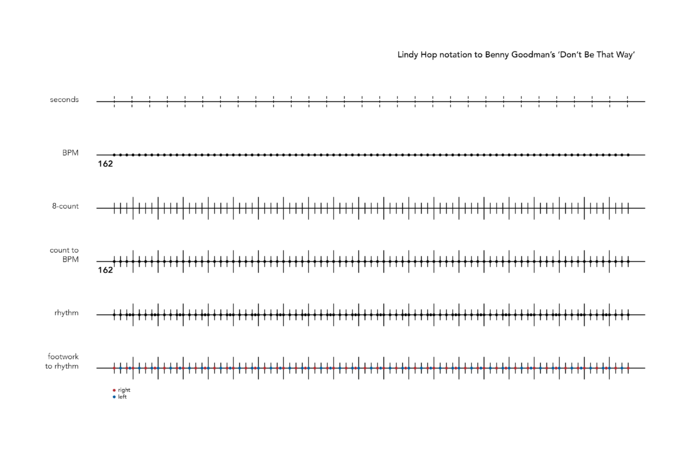
how do you communicate movement?
what is your movement score, when you're not there?
can a score be more than a tool to document, but also a tool to generate new content / choreology / graphic design?
can a score be a generative tool for other aspects?
choreology into layout - use grids / birds eye view
open scores (theatre, music) - other people's scores
- how are they incomplete?
- what can they produce?
score as a memory aid
- how do they help?
- as designer, make them general purpose
- readable by more people, less bias
- collect content (raw)
- turn to general purpose (design)
- make experiments
Tip:
make map of aspects that you are working on - not interested in
find what is less important
like this one?
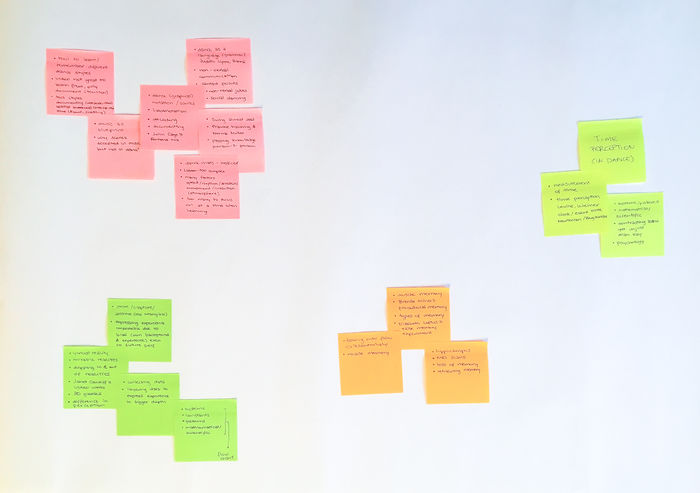
zoom out from the one you made - 3 words per post it
then narrow down
proposal feedback (after deadline)
convince investors
- who you are
- what have you done?
- what would you like to address / answer?
- why? why important?
- how?
interested in dance, memory and typography graphic design
no common score to translate dance, or to generate new
compare to other (solid) study - e.g. type design
what parameters are left out?
what is left for interpretation?
intent (vibe) and culture is not expressed in dance notation - could those be interpretations in a score?
26 NOV
Business Insider: Carl Krull's 3D paintings using single lines
25 NOV
Posters that communicate sound - and/or rhythm - through repetition.
Almost makes you want to say the words out loud
Rotterdamse Popweek
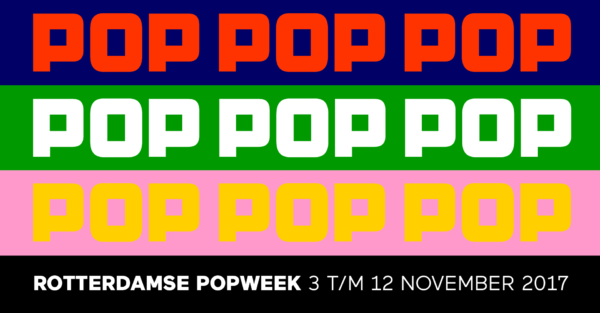
Cha cha cha by Picomodi

How would Lindy Hop's rhythm be communicated?
- the rhythm needs to be divided into 4 sections
- the width of the text should reflect the duration of the move
- the font should reflect, not mimic, the time and culture
Fonts in use: 1930s
- Futura (from 1927) - sans, too geometric, representative of Bauhaus, modern
- Gill Sans (1928) - sans, corporate, display typeface, for notices, announcements, advertising and posters
- Kabel (1927) - sans, geometric, low x-height, slight irregularity suggesting calligraphy (slightly better option)
- Signal (1931), Quick (1933), Fanal (1933) - script fonts, more human, previously for slogans, now commonly used for small cafes
Most famous Swing ballroom in New York during 1930s and 40s
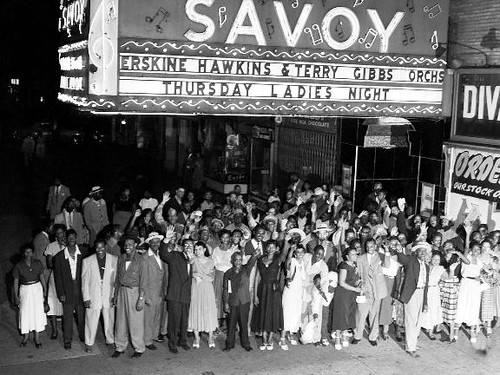
Fonts used in experiments below
- Betty Noir (slightly art deco, about 10-15 years too early)
- Futura
- Neutra Display (low x-height)
- Market Deco (very slightly cabaret, about 10-15 years too early, but correct target audience / environment)
24 NOV
uploaded final version of Project Proposal
21 NOV
Tech Insider: Daniel Rozin

http://www.brianjonestap.com/BrianJonesTapChoreography.html
How would Lindy Hop's rhythm be communicated?
- the rhythm needs to be divided into 4 sections
- the width of the text should reflect the duration of the move
- the font should reflect, not mimic, the time and culture
Fonts in use: 1930s
[[File: ]]
20 NOV
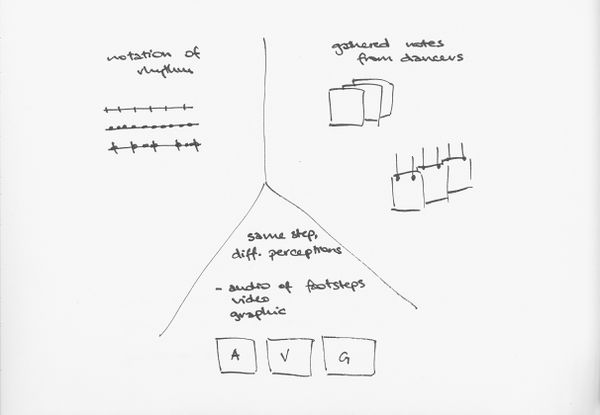
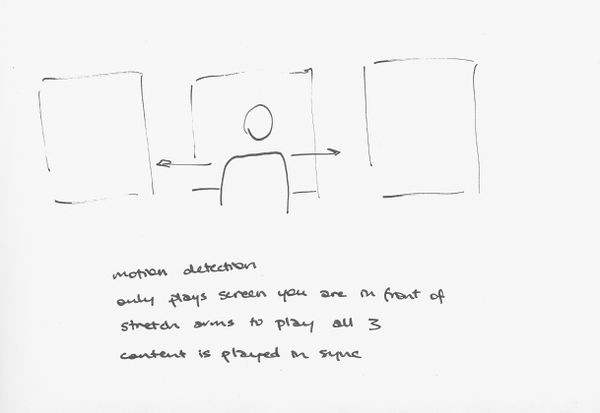
Meeting with Aymeric
idea for final form is not necessary
explain how you will answer your research question
what's the best way to present archive?
project is to attempt to find many methods to archive dance
make list of areas / methods / techniques / ideas
- graphical notations (previous systems, of rhythm, of space / geometric shapes, of footwork, comparisons of dance styles)
- video (body cam, from audience perspective, of footwork, of socials)
- audio (of footsteps, of rhythm, of songs, of scatting)
- people's notes (of class, of rhythm, of steps, of space)
- interviews (of dance teachers, of professionals, of beginners, of Norma?, of those who used to dance)
- academic papers (theory of dance)
- theory (time perception, memory, flow)
mention which ones are finished, just started, at which stage are they at?
- graphical notations (previous systems, of rhythm, of space / geometric shapes, of footwork, comparisons of dance styles)
- video (body cam, from audience perspective, of footwork, of socials)
- audio (of footsteps, of rhythm, of songs, of scatting)
- people's notes (of class, of rhythm, of steps, of space)
- interviews (of dance teachers, of professionals, of beginners, of Norma?, of those who used to dance)
- academic papers (theory of dance)
- theory (time perception, memory, flow)
aim:
- to show diversity
- to show it becomes difficult to show all in one system / technique
- show it's an illusion - can only capture snippets
multiple perspectives (layers)
to describe the intangible centre (dance)
"Based on what I have right now, I could present the archive like this.."
Timeline
- collect data till Feb
- editorial stage in Feb
19 NOV
Eric Lawton's curated exhibition
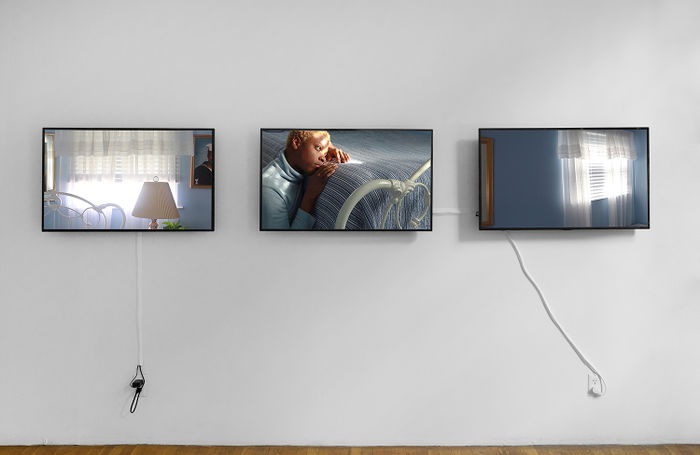
Return to Sender by Tommy Kha

Eric told me that they decided to present the photographs in small frames on a shelf, so that the viewer needs to pick them up and bring them closer to the face to see them in detail. This picking up motion is similar to placing the frame close to the lips, like a kiss. The audience did not interact with the piece the way the curators hoped.
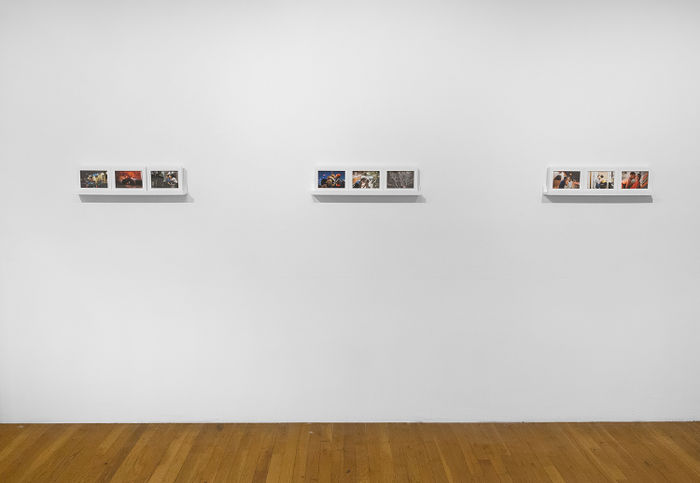
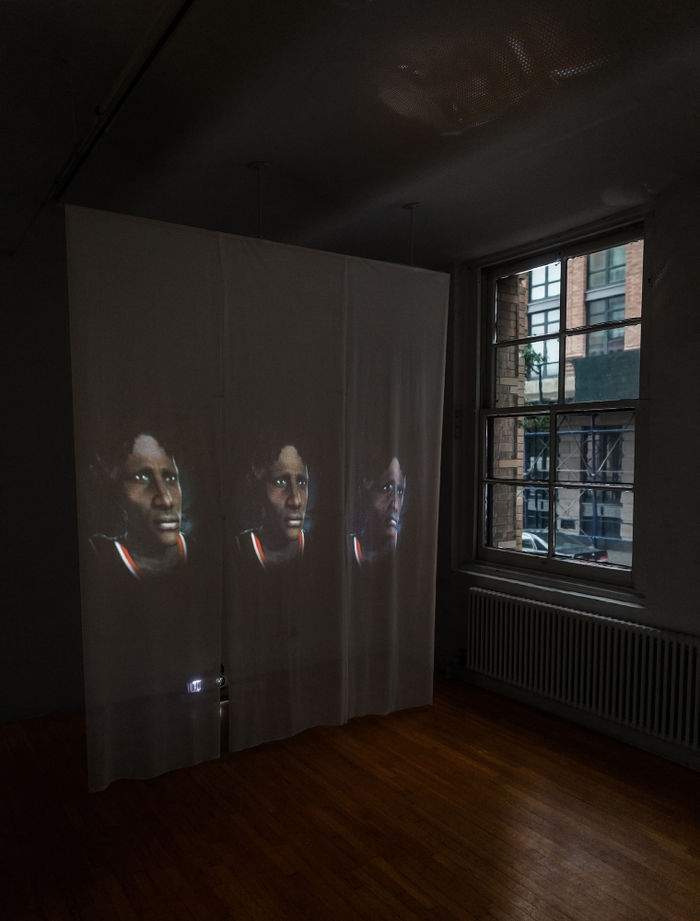
wikipedia: Braille
wikipedia: Night Writing
Walking Past: Spitalfields 1912–2012 by Adam Tuck


31 OCT
30 OCT
Feedback from Andre
dance as a system
constants, patterns
mathematical / scientific
formula behind pop songs / jazz songs
generative music, computer write sonata
David Burn (Bob Wilson - Dirty Dozen Brass Band)
Vox relation
notation is not the work, it's the blueprint / a score
Florian - context?
what separates dance and music with resource of score?
music has a way of transmitting score. score is accepted in music, but not in dance - why?
what is this important to you?
look at practitioners that look at memory
search on jstor key terms: dance & memory
Steve Paxton & Trisha Brown
'Material for the Spine'
main problem: not approaching the matter in a way I could deal with
- SongSim looks only at one element (lyrics)
- easy to encapsulate structure
- macro view
can you quantify dance by anything?
write / express BPM differently - shorter distances between lines, show faster BPM
make own notations on Labanotation
Special Issue 02 performance was a two part outcome
- a (graphical) documenting tool that I could personally use in the future
- playful, slightly educational, interactive experience for the audience
this frame could be used for the graduation project too
generative systems
squared paper - each square a second
visualisation
"basing on this, this and that factor, found these variables, time is constant"
WSA - looked at language of time to measure / quantify it
Johanna Drucker - Graphesis
pervious event in NY (Sept 2017)
29 OCT
diagram from mid March 2017
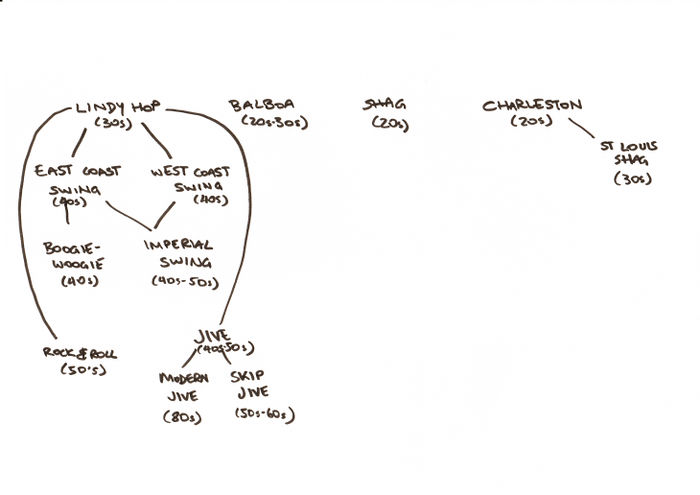
continuation of rhythm analysis in swing using method from March 2017
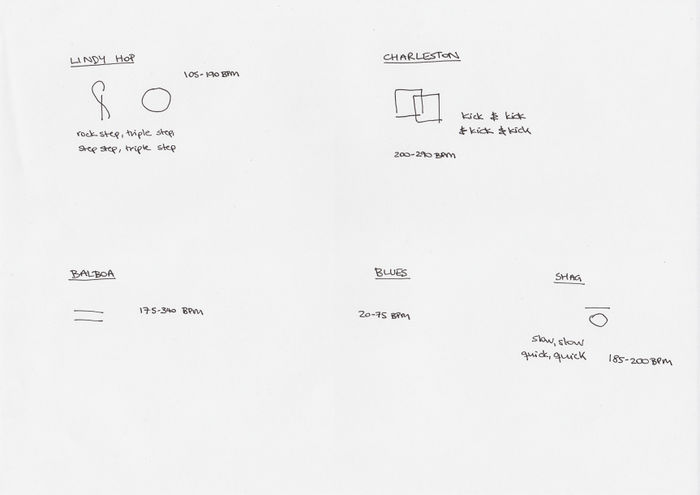
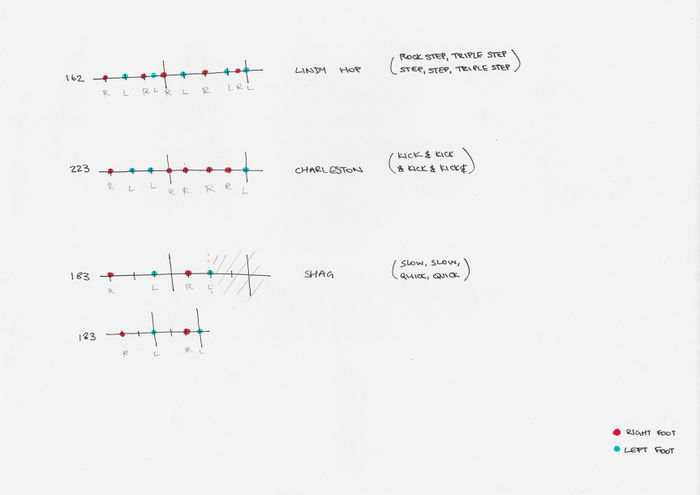
23 OCT
YouTube: Vox - Why we really really really like repetition in music
Are Pop Lyrics Getting More Repetitive? by Colin Morris
SongSim by Colin Morris
Michael Jackson - Beat It

Scientific research: On Repeat: How Music Plays the Mind by Elizabeth Hellmuth Margulis
"Her research uses theoretical, behavioral, and neuroimaging methodologies to investigate the dynamic, moment-to-moment experience of listeners without special musical training. She was also trained as a concert pianist."
YouTube: ballet rotoscope | バレエ・ロトスコープ
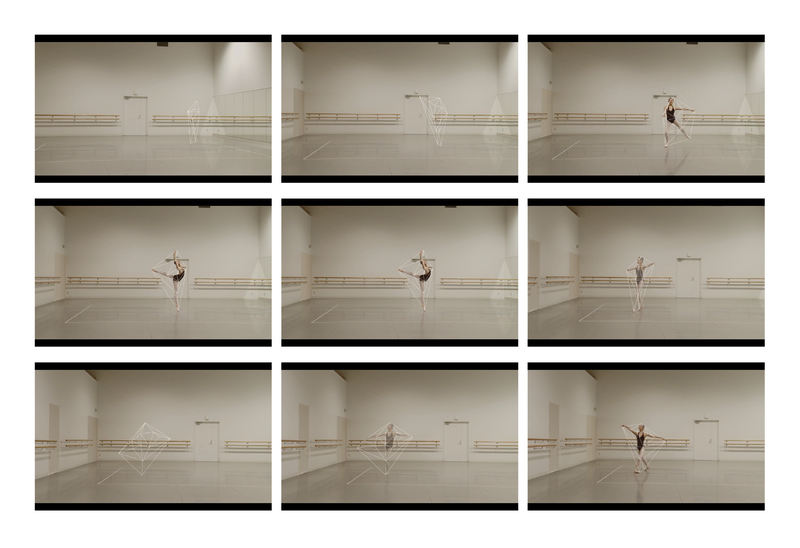
rotoscope
/ˈrəʊtə(ʊ)skəʊp/
noun
a device which projects and enlarges individual frames of filmed live action to permit them to be used to create cartoon animation and composite film sequences.
started looking into -scope / -graph / -type at beginning of first year, never did anything with it though. How could you mix a cyanotype with stereography?
Mixing Media
Structure of a Movement by Gheyber Gutierrez
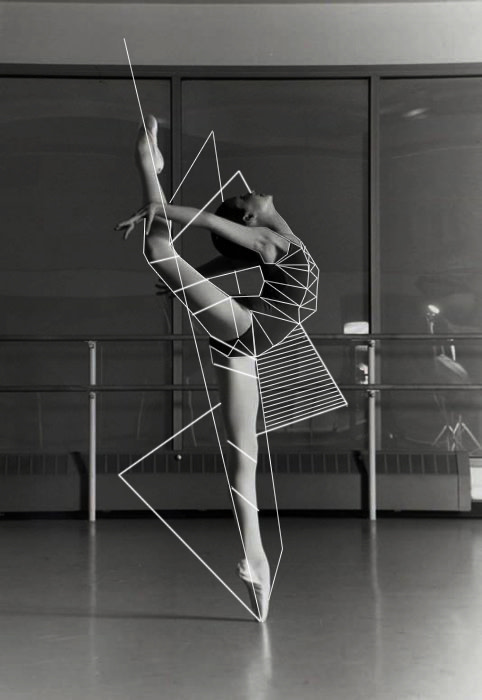
26 OCT
wikipedia: Light Sensitive Materials
- Ammonium dichromate
- Gold(I,III) chloride
- Hydrogen peroxide
- Lysergic acid diethylamide
- Photoacid
- Photoconductive polymer
- Photoresist
- Potassium dichromate
- Silver bromide
- Silver chloride
- Silver iodide
- Silver nitrate
22 OCT
YouTube: Tandem Charleston Front Flip | Swing Dance Aerial Breakdowns (Lesson 22) | Lindy Ladder
YouTube: Beginner Swing Dance Aerials | Frog Jump | Toss Out
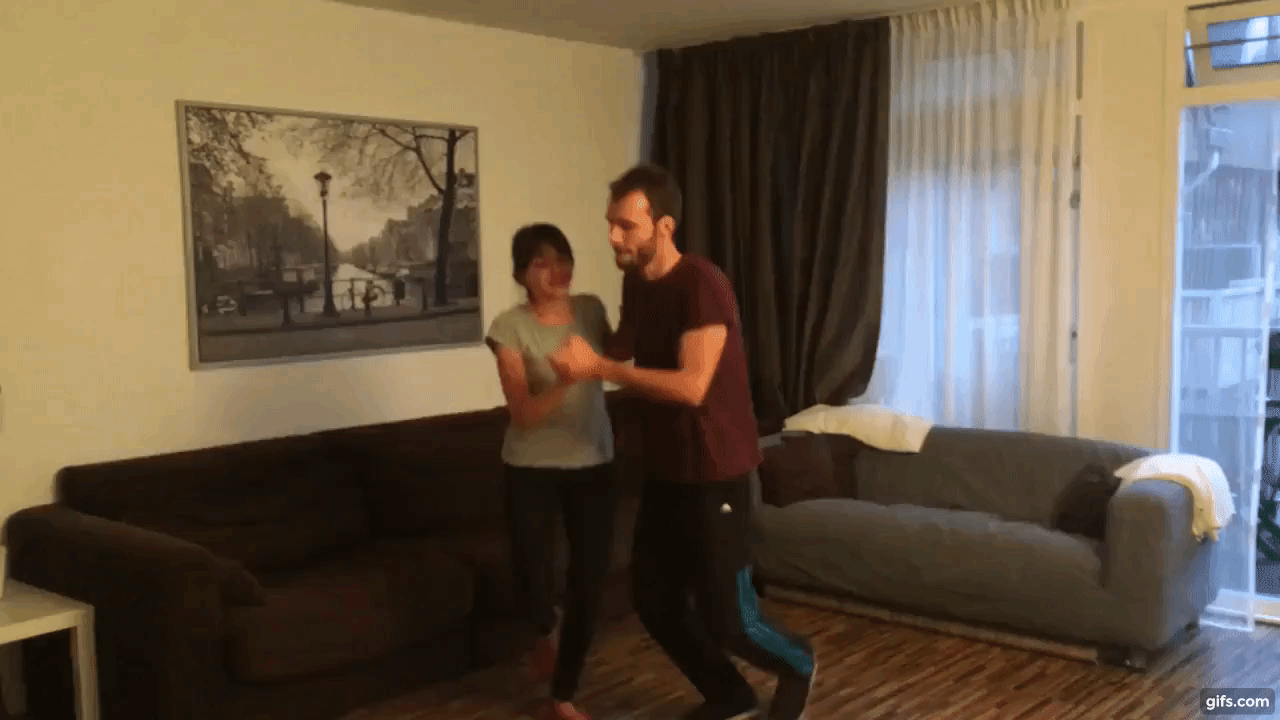
A ballerina dances with the geometry of her own movements
17 OCT
(insert screens hackpact scan here)
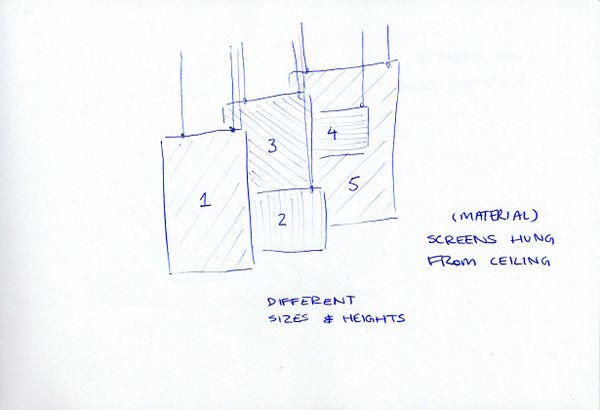
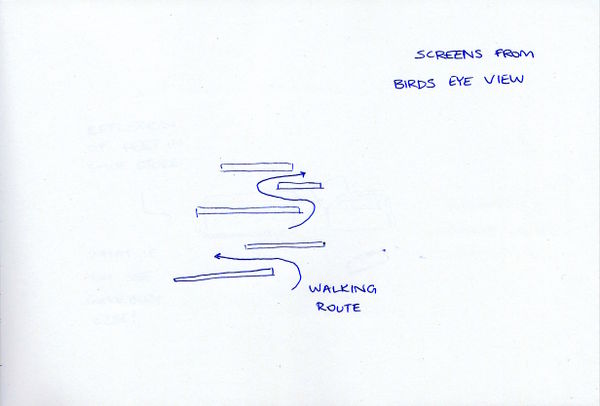

16 OCT
(insert dipping in & out of different realities hackpact video here)
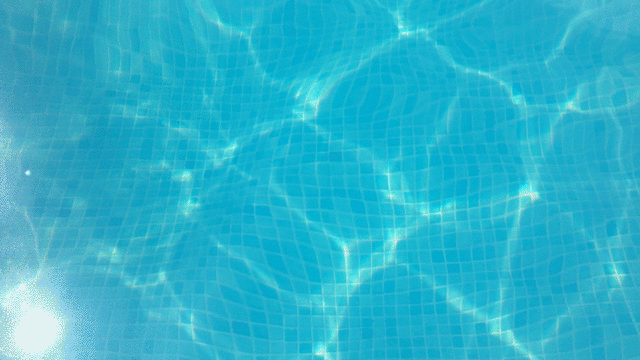
15 OCT
YouTube: Moon Ribas
Ted Talk: Moon Ribas
14 OCT
(insert light-sensitive material hackpact scan here)

Such as cyanotype
http://shsgcsephotography.weebly.com/uploads/2/3/5/0/23504550/2144987.jpg?397
DIY coloured light sensitive prints by Lumi Inkodye
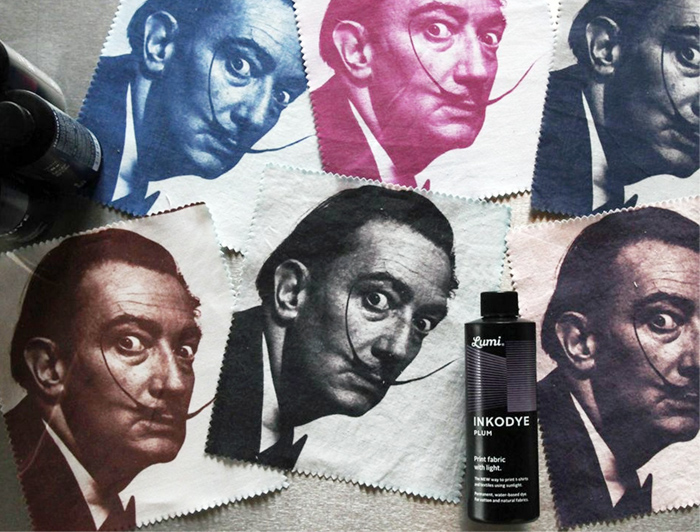
previously tested cyanotype on cloth
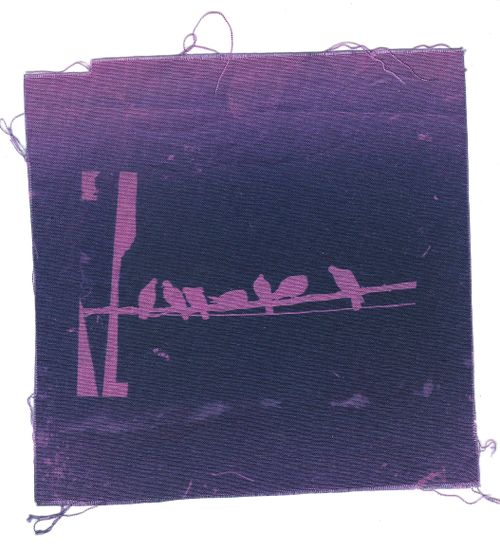
light-sensitive printing showing movement
Allan Jenkins

Reading list:
12 OCT
(insert layers hackpact scan here)
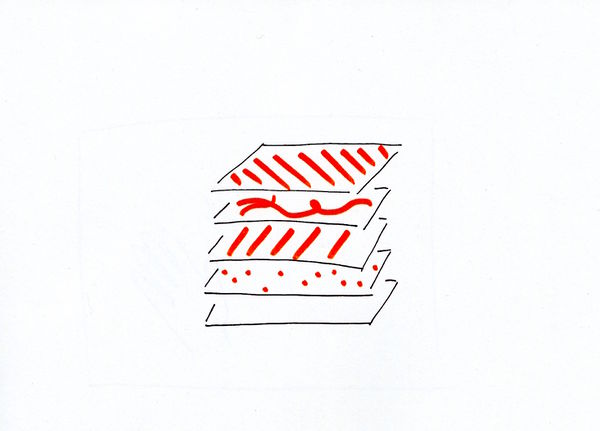
Each separate layer focuses on a different aspect of dance: speed; rhythm; movement; direction; intention
Layering data like John Cage's Fontana Mix
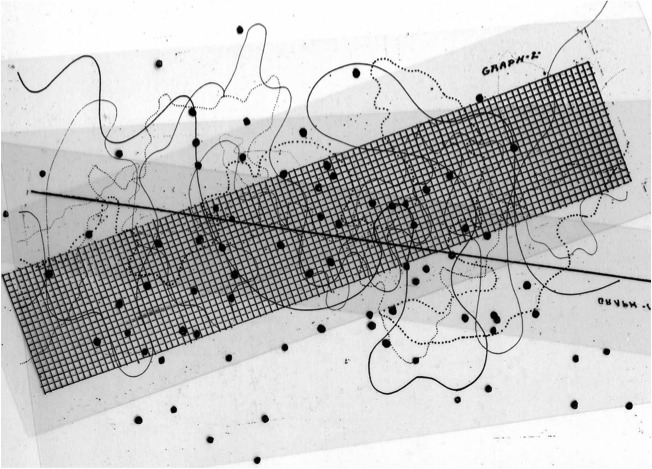
11 OCT
(insert flowchart hackpact scan here)

hinting at science fiction (to what extent can we communicate experience? the future?)
focus more on perspective difference
the more information, the better we see
(burka bus seats)
(dove ad)
we see differently because of past experiences
colour names and cultural perspective
history of swing dying out
community and trust sucks you in
understand why it was an escape in 1930s (war and depression), why so strong even now?
even in gaming community
video for archive
need someone (human contact) to learn it - be engaged
appealing . addictive
disconnected nowadays
next:
- prototype
- 5 different ways to film a dance
- build a body cam?
- add rhythm with footwork
Belgian guest speaker - what was his name?
evernote from his session: Vaast Colson
hands and interview out of sync
- play around with image, sound, sync
- image only
- sound only
- transform tones
Special Issue 02 very early ideas
- 3 part project: sound of footsteps, video of dancers, suited music to dance style, all played in sync on 3 different devices
- binaural sound / or simplified version of 4 microphones placed around a room
Janet Cardiff - Video Walk
- dipping in / out of realities
- pick & choose perspective
- mix reality
- control (John Cage as hackpact)
how well does it describe reality / experience?
how to use that as...
"Mixable Realities"
not virtual
how do we mix realities? - don't worry, don't need to answer this in the project or thesis
an experience, deeper than what is shown (video)
urgency: dance not just a past-time, but human experience and captured memory
- double exposure trials made link in brain
- film with double exposure? overlapping?
- Sigur Rós - sharp editing (maybe complementary to fluid movement?)
'capturing intention'
Maria from PZI - step it up, blur that line. Not just control a live performance
recorded (when no activity), then turns live when there is activity
camera and projector fro same perspective created a great dip into different reality
flowchart?
decision making when choosing layers
to do:
- 3 videos of dance (Rashomon perspective)
software: Gentle
could it read footstep rhythm - annotate it? scat it?
Michael's notes
Dance your PHD.
Searching for a Hack Pact
Inspired by installations with scrim that records temporarily the shadows cast on them (could be done digitally as well?)
Nicolas + me + ELLEF blog on vision
http://sicv.activearchives.org/logbook/
https://www.theguardian.com/world/2017/aug/02/bus-seats-mistaken-burqas-anti-immigrant-group-norwegian
The examples of seeing different colors (blue and green)
(me: set! bring?!)
Looking at the difficulty of filming dance.
You only capture one perspective.
(This would be a nice experiment ... make a body camera with PI !!!)
Janet Cardiff installations??? (were we talking about this) listening to recordings and revisiting spaces.
The example of swing almost disappearing, it exists in video form, but the actually performers were instrumental in bringing it back. Became a gap commercial, Swing Kids came out, 30/40s powerful
the relationship of VIDEO to triggering interest.
the need of an EMBODIED INSTRUCTOR
RECALL, the way you show recall / recap
(again experiments in how you show the video)
K: The people who take part in social get togethers are much more able to move up the "levels" of dance as they are more engaged.
Binaural sound. Desire to hear the same sounds as a dancer while performing.
CD+G ??? as a format to play with.
Janet Cardiff: Alter Bahnhof
Mixed reality.
Mixability ....
Is Mixed realities .... or MIXABLE Realities a good (working) title.
Her example of layers of transparency:
- Picka music
- Rythm
- Speed
- Direction
- Body orientation (arm/leg/high/mid/low)
Description and Performance as a loop influenced by the quality of the language..
dance is a ritual connected to memory and not just "pasttime"
- Photo compositions & self-portrait
- Lamography...
Her experimental photography
Camera that mixes .
Could overlaps have been a better editing strategy in this clip:
https://vimeo.com/53394874 (rather than the quick cutting?)
- Do filming of a dance from different perspectives and sound recordings (rhthum)
- Different kinds of playbacks . ... start with making "manual" variations (exploring things like the double exposure / collage / sound mix / all sort of variations).... and evnetually making interactive platform that allows the view / <!> implciates the body of the viewer in this "remixing" in a way that really goes beyond just viewing a video.(so where the interaction actively becomes part of the mssage ... not just a gimmick).
(Capturing Intention DVD ... could bring)
Maria Karagianni's work: (at pzi) and the magic of filming something and later projecting it from the same vantage point.
https://pzwiki.wdka.nl/mediadesign/Notations_under_provisions
Finite state machines (as an "engineers" model of how a machine works, like a coffee machine or an electronic oven).
How to do tests that link with the research and help narrow down the question.
Scat.
I used gentle to make this: http://sicv.activearchives.org/contemporaneity/words/
http://lowerquality.com/gentle/
(I found that the "online" version didn't work , but it is possible to install the software on you mac)
TrY: https://github.com/lowerquality/gentle/releases/latest
10 OCT
Union Libre by Léon Ferrari

I'm curious what is actually written there in braille - try translating it here
9 OCT
(insert taking off 3D glasses hackpact here)
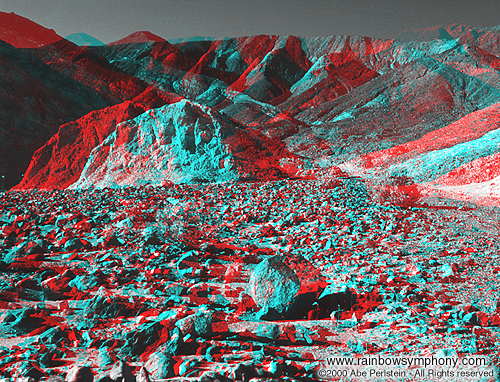
anaglyph / stereoscopic 3D effect
wikipedia: Anaglyph 3D
work of Lars Brandt Stisen


4 OCT
YouTube: THE REVOLUTION OF DANCE GAMES | Old Friend VR (Oculus Touch Gameplay) by Cathie
I can't tell whether the game or the review is the thing that's making me a little speechless. Would like to try it out, probably not see myself (recorded) in reality.
Old Friend game available for €3 on Steam
Inverse: 5 Apps for Creating Your Own VR Content
- set VR mood with
- a backdrop that historically suits the dance
- music that suits the dance style
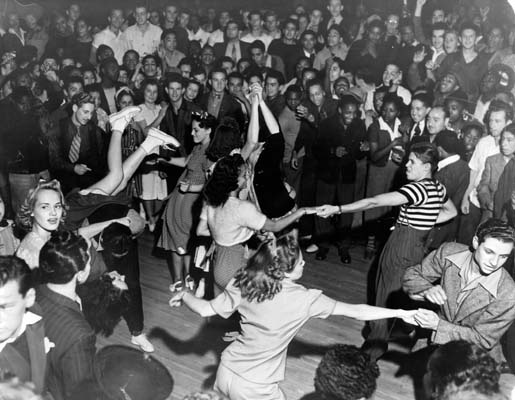 with some music
with some music
obviously, a still image doesn't express an experience as well as video, so how to make 360-degree video?
Kolor: How to create 360-degree videos

for only €3,444!
GoPro Omni (€2,424) + 6 GoPro cameras (min. €170 each)
unless I create a rig myself - might not be so smooth though when editing
DIY GoPro: mounts / ramps/ sliders / .. has no 360 rigs though
3D printed?
closest I found on instructables - still nowhere near
360 Rize: 360 Plug-n-Play™
- 360H6 for $120! Kopen kopen open!
- Hero3,3+,4 Pro6 v2 for $395
- Pro6 v2 review
Wistia: How to Stitch GoPro Footage into 360 Spherical Video
PC World: Spherical video will shape your reality in 2016 (..2017? 18?)
"[Virtual reality is] a way to experience other people's lives and experiences in a manner never possible before," Woodman said. "Days or weeks later when you recount your viewing experience it becomes difficult to discern whether you watched it or you lived it." - Nick Woodman (GoPro CEO) during a CES keynote in 2016
connection to phycologist Elizabeth Loftus, False Memory Experiment in Opening Skinner's Box p.182-204
Even news are dipping their fingers into VR
NY Times: NYT VR
"Stand alongside Iraqi forces during a battle with ISIS. Walk on a planet three billion miles from the sun. Join our award-winning journalists at the center of it all. Explore the library of 360-degree virtual reality experiences for yourself."
---
Side note for "Publishing the Unpublishable" idea for thesis, article on Vice: Ubu Publishes the Unpublishable
Thankfully it is not about publishing experiences, but rather, what makes something unpublishable? Read it on ubu here
"What constitutes an unpublishable work? It could be many things: too long, too experimental, too dull; too exciting; it could be a work of juvenilia or a style you've long since discarded; it could be a work that falls far outside the range of what you're best known for; it could be a guilty pleasure or it could simply be that the world judges it to be awful, but you think is quite good." - Kenneth Goldsmith
---
Todays Art: Chris Salter + TeZ + Valerie Lamontagne – Ilinx from 2014

3 OCT
- publishing the unpublishable
- capturing an experience
- how to capture an experience?
- to what extent can we capture an experience?
- capturing an experience or relationship
- Sean's connection
- notation
- archive
- dance as language (conversation between people)
- how can I best communicate an experience?
2 OCT
keywords for graduation project
- participatory
- playful
- thought provoking
- eye-opening (not serious, political..)
- experience
- research / experiments shown in experience
- transpose / translate
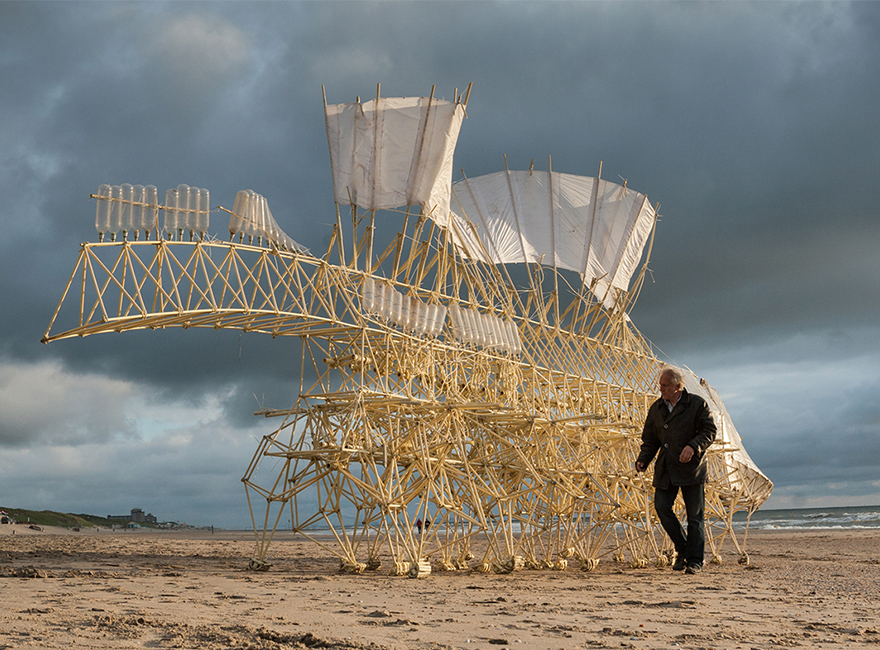
Theo Jansen's wind-powered sculptures, but stationary and with screens showing my research / experiments. "a cluster-fuck of screens"

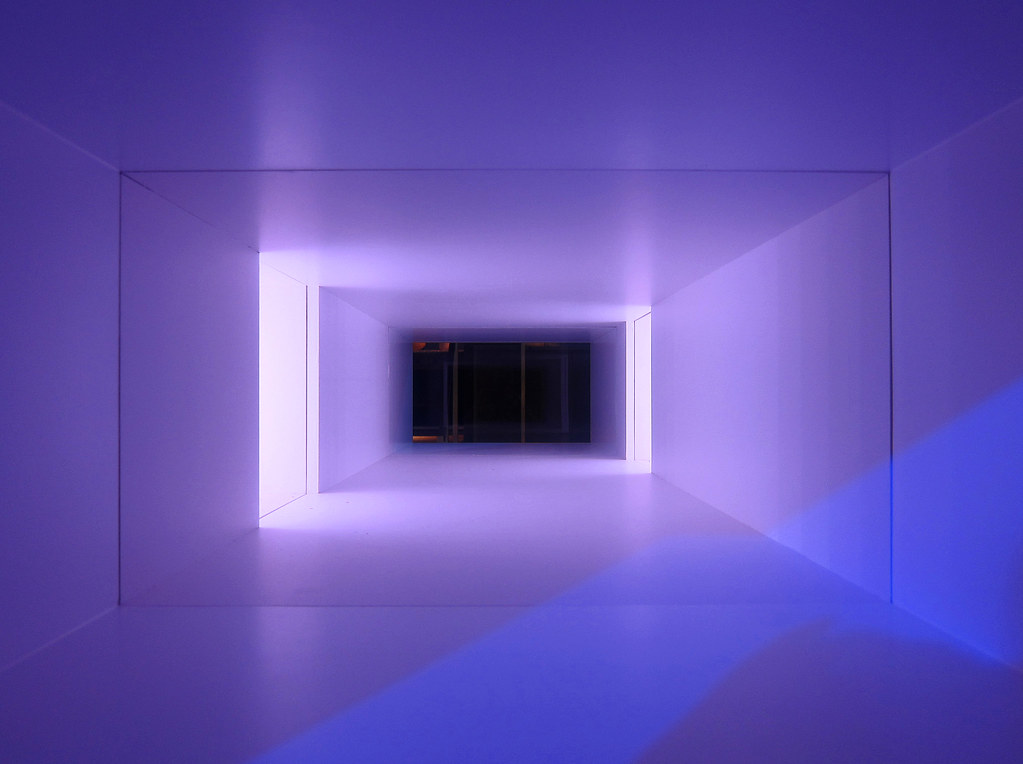
Interactive rooms at Wonderkamers in Gemeentemuseum Den Haag, or the purple ambient-style experience room with couch - can't find correct photo
Reading list:
- Time to Act: New Perspectives on Embodiment and Timing by Argiro Vatakisab, Helena Sgouramanib, Andrei Goreac, Vassilia Hatzitakid, Frank E.Pollicke
- Visual Timing of Structured Dance Movements Resembles Auditory Rhythm Perception by Yi-Huang Su and Elvira Salazar-López
- In search of lost time: Does dance experience enhance duration estimation performance? by Helena Sgouramani
Feedback from Aymeric
If you want to go into notation, read into this:
Languages of Art: An Approach to a Theory of Symbols by Nelson Goodman
wiki: Languages of Art
patterns: you don't have your nose stuck in code
not specific answer, but approach creatively
muscle memory
cooking: take structure, then improvise (making curry)
archive 2020, chapter on mystical essence of the poet
more on Archive 2020
even more on Archive 2020 on Annet Dekker's site, aaaan.net
live in a world where we think we can capture everything, but actually share small aspect (publishing information)
documentation / experience - ongoing tension
consuming experience or documentation of experience
(side thought: instagram trying to capture experience, but only showing a small aspect. adding soundtrack (song that was played on repeat at the time / summer top hit) to collection of photos could help the creator fill in the blanks, but is very personal. their memory is triggered, but the audience still doesn't experience it the same way)
formulate question - super precise
don't read too much or connect too much
publishing the unpublishable
frustration / illusion
mystical essence of the poet
make hypothesis / rant
the map is not the question
you're not looking into how they are linked
it is a tool / a guide (flow chart) to help answer the question, but not question itself
don't think about body / content of thesis
just think about what you want to answer
1 OCT
TED: A choreographer's creative process in real time by Wayne McGregor
"I'm going to start really, really simply. Usually, dance has a stimulus or stimuli, and I thought I'd take something simple, TED logo, we can all see it, it's quite easy to work with, and I'm going to do something very simply, where you take one idea from a body, and it happens to be my body, and translate that into somebody else's body, so it's a direct transfer, transformation of energy.
And I'm going to imagine this, you can do this too if you like, that I'm going to just take the letter "T" and I'm going to imagine it in mind, and I'm going to place that outside in the real world. So I absolutely see a letter "T" in front of me. (note: spacial recognition) Yeah? It's absolutely there. I can absolutely walk around it when I see it, yeah? It has a kind of a grammar. I know what I'm going to do with it, and I can start to describe it, so I can describe it very simply. I can describe it in my arms, right? So all I did was take my hand and then I move my hand. I can describe it, whoa, in my head, you know? Whoa. Okay. I can do also my shoulder. Yeah? It gives me something to do, something to work towards. If I were to take that letter "T" and flatten it down on the floor (note: spacial recognition from a different perspective), here, maybe just off the floor, all of a sudden I could do maybe something with my knee, yeah? Whoa. So If I put the knee and the arms together, I've got something physical, yeah? And I can start to build something. So what I'm going to do just for one and a half minutes or so is I'm going to take that concept, I'm going to make something, and the dancers behind me are going to interpret it, they're going to snapshot it (note: capture information quickly, capture memory in time?), they're going to take aspects of it, and it's almost like I'm offloading memory and they're holding onto memory? Yeah? And we'll see what we come up with. So just have a little watch about how they're, how they're accessing this and what they're doing, and I'm just going to take this letter "T," the letter "E," and the letter "D," to make something. Okay. Here goes." (3:54 - 5:26)
[...]
"Okay. From there I'm going to do a very different thing. So basically I'm going to make a duet. I want you to think about them as architectural objects, so what they are, are just pure lines. They're no longer people, just pure lines, and I'm going to work with them almost as objects to think with, yeah? So what I'm thinking about is taking a few physical extensions from the body as I move, and I move them, and I do that by suggesting things to them: If, then; if, then. Okay, so here we go.
Just grab this arm. Can you place that down into the floor? Yeah, down to the floor. Can you go underneath? Yeah. Cat, can you put leg over that side? Yeah. Can you rotate? Whoom, just go back to the beginning. Here we go, ready? And ... bam, bake ... (clicks metronome) Great. Okay, from there, you're both getting up. You're both getting up. Here we go. Good, now? Them.
So from there, from there, we're both getting up, we're both getting up, going in this direction, going underneath. Whoa, whoa, underneath. Whoa, underneath, whoo-um. Yeah? Underneath. Jump. Underneath. Jump. Paolo, kick. Don't care where. Kick. Kick, replace, change a leg. Kick, replace, change the leg. Yeah? Okay? Cat, almost get his head. Almost get his head. Whoaa. Just after it, maybe. Whoaa, whaaay, ooh. Grab her waist, come up back into her first, whoom, spin, turn her, whoo-aa. (Snaps) Great. Okay, let's have a little go from the beginning of that. Just, let me slow down here. Fancy having eight -- (Laughter) Fancy having eight hours with me in a day. So, maybe too much. So, here we go, ready, and -- (Clicks metronome)
Nice, good job. Yeah? Okay. (Applause) Okay, not bad. (Applause) A little bit more? Yeah. Just a little bit more, here we go, from that place. Separate. Face the front. Separate. Face the front. Imagine that there's a circle in front of you, yeah? Avoid it. Avoid it. Whoom. Kick it out of the way. Kick it out of the way. Throw it into the audience. Whoom. Throw it into the audience again. We've got mental architecture, we're sharing it, therefore solving a problem. They're enacting it. Let me just see that a little bit. Ready, and go." (7:44 - 10:04)
brainstorm:
- want to create an experience / interactive piece
- will it be about learning, in general?
- can I create an interactive piece that will help people learn?
- virtual reality with binaural recording
- how does a brain process dance? as language, with the use of memory, by spacial intelligence?
- can coding be compared to dancing? language types, (muscle) memory, practise, logic / spacial awareness, structure & fluidity
- scary to start for some, easier once understand the structure / basics
- dance styles are different languages, python, html, java are too
- spacial awareness, physically or digitally
- how to capture the essence of a language?
- look into languages that have died out
- how did it happen?
- how was it passed down? archival methods: script, sound recordings, imagery, books, word of mouth? - look into Florian's history classes
- decoding dead languages / alphabets: hieroglyphics or inscribed nordic comb?
Some TED for later
Pilobolus: A Dance of "Symbiosis."
Tim Ferriss: Smash fear, learn anything
Yami Joshi: How dance helps me deal with stress
Derek Sivers: How to start a movement
Mae Jemison: Teach arts and sciences together
http://www.independent.co.uk/life-style/bilingual-speakers-time-different-people-one-language-study-swedish-spanish-a7715146.html
30 SEPT
Received personal notes from Fil (Filip)
ask whether possible to post on wiki / add to research
27 SEPT
Feedback from Michael
methodology of experiments backed up by theory (or vice versa) is good
"Perspective is worth 80 IQ points" - Alan Kay
"The best way to predict the future is to invent it" - Alan Kay (quoted that at the beginning of Special Issue 02 research!)
John Cage

- Doing with Images by Alan Kay (pt.2 11:45 learning how to play tennis)
- Computers as Theatre by Brenda Laurel
- mathematics v.s. human (duality) not so black and white
- not separate things, that's too simplified
- reinforcing a cliche that's not true
- should be connecting structure with fluidity
- third leg connecting the two sides: structure - third leg (whatever it may be) - fluidity
aim?: does this connection help us see / learn things?
Alan Kay related to Seymour Papert
YouTube: Talking Turtle by Papert
is notation written from a perspective of the floor (step mats) or the body (visualising steps)?
Joana Chicau wiki!
her struggle: friction between web design and dance
challenging to show it in fresh perspective
not describing dance and time, but using it (a tool) to show something else
'mark up language using dance and music to teach someone to dance' instead of 'making new dance notation'
have implications to something else: flex box? grids? how could that be informed from Cage or choreographically sense? cross dimension
humour in Special Issue 02
communication & interaction
want to use that essence in graduation project
look up and play around with temporality / sketches with time
Classic FM: Art and music collide in these 20 stunning graphic scores
More musical scores that aren't John Cage!
Crumb - Twelve Fantasy-Pieces after the Zodiac for Amplified Piano
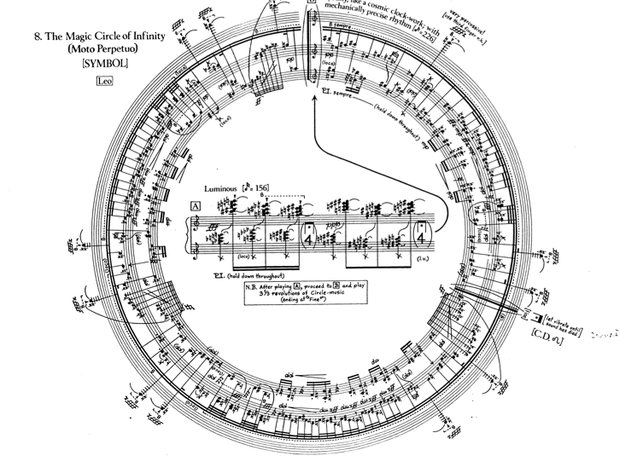
Antosca - One Becomes Two
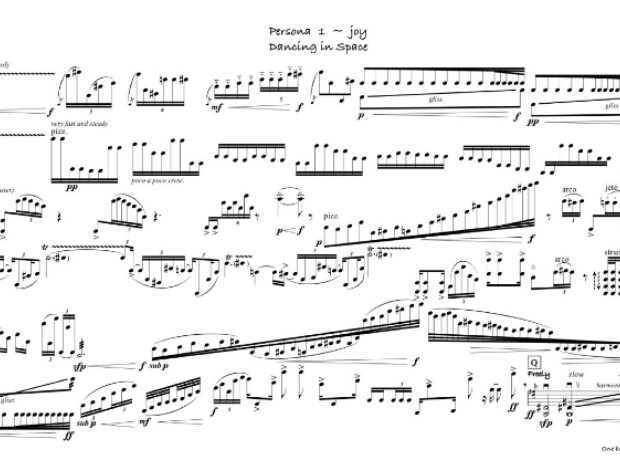
25 SEPT
Psychology of dance
wiki: Psychology of dance to find references
Dancehub: 5 Interesting Psychological Studies Involving Dancing
(not great source, but has many links to studies related to topic)
- Dancing Improves Your Brain
- Mental Practice Can Lead To Improved Dancing
- The Evolution Of Human Dance May Have Been A Mistake
- Dancers Can Learn Routines In Different Ways
- Girls Under Age 16 Have The Most Dancing Confidence
1. Dancing Improves Your Brain
Psychology Today: Why Is Dancing So Good for Your Brain?
more references / cited studies about how dancing can improve the brain
2. Mental Practice Can Lead To Improved Dancing
University of California Santa Clara Cruz: UCSC dance research published in prestigious Psychology Science journal
3. The Evolution Of Human Dance May Have Been A Mistake
American Psychological Association: Dance, dance evolution
not many animals have close connections between auditory and motor skills
"Psychologists’ research on the power of movement is giving us insight into why we first danced and how cultures built on that ancient impulse."
4. Dancers Can Learn Routines In Different Ways
Duke Chronicle: Research investigates the science behind dance
5. Girls Under Age 16 Have The Most Dancing Confidence (not related?)
The Guardian: Why do people dance?
---
Springer: Thinking in action: thought made visible in contemporary dance by Catherine Stevens and Shirley McKechnie
Buy entire journal for EUR 42.29
or find through HR mediatheek
download links here
link to downloaded file
Abstract
Contemporary dance—movement deliberately and systematically cultivated for its own sake—is examined in the light of the procedural and declarative view of long-term knowledge. We begin with a description of two settings in which new works of contemporary dance are created and performed. Although non-verbal, contemporary dance can be a language declared through movement and stillness of the body. Ideas for new movement material come from objects, events or imaginings that are spoken, seen, heard, imagined, or felt. Declared through movement, the idea becomes visible. Communication in dance involves general psychological processes such as direct visual perception of motion and force, motor simulation via mirror neurons, and implicit learning of movement vocabularies and grammars. Creating and performing dance appear to involve both procedural and declarative knowledge. The latter includes the role of episodic memory in performance and occasional labelling of movement phrases and sections in rehearsal. Procedural knowledge in dance is augmented by expressive nuance, feeling and communicative intent that is not characteristic of other movement-based procedural tasks. Having delineated lexical and grammatical components in dance, neural mechanisms are identified based on Ullman’s (Ullman in Cognition 92:231–270, 2004) alignment of lexical knowledge with declarative memory and mental grammar with procedural memory. We conclude with suggestions for experiments to test these assumptions that concern thought in action in composition, performance and appreciation of contemporary dance.
check out their 60+ references
reference if want to add to own bibliography
Stevens, Catherine; McKechnie, Shirley (2005). "Thinking in action: Thought made visible in contemporary dance". Cognitive Processing. 6 (4): 243–252. doi:10.1007/s10339-005-0014-x.
Jstor: A Nonverbal Language for Imagining and Learning: Dance Education in K-12 Curriculum by Judith Lynne Hanna
Feedback from Andre
- Tino Sehgal
- aaaaan.net (interview)
- human to human interface
- archiving visuals is only a part of it
- what is communicate during dance? movement? feeling?
- Tino - to make time appear
So far topics covered:
dance & time
dance & language
dance & notation
time & language ✓
language & notation ✓
notation & time ✓
time & language & notation - might be too much?
- side note:
- music as blueprint
- musicality & dynamics
- interaction / dialogue
silence: lectures & writing
John Cage - Lecture on Nothing
What is he trying to transmit using a score? Remember he is a musician
23 SEPT
possible structure of chapters for thesis:
Perception Of Time
- clocks
- Levine's clock v.s. event time
- differences in culture / langage?
- experiment / anecdote / own perception / interview with Italian friends (who lived abroad for the past few years) about their time perception compared to their familys' back at home
- Bergsonian v.s. Newtonian time
- describing time
Graphical Notation
- scores
- dance mats v.s. Labanotation
- spatial orientation (with time)
- experiment: spatial + rhythm
- the need for notation (publishing and archiving)
Memory and Flow
- Kandel's sea slugs & Milner's memory types
- muscle memory
- experiment: Jive mix up (challenging flow and muscle memory)
- Csiksgentmihalyi's flow
- experiment: experiencing flow in new dance style
- interviewa: tools for flow and memory
- comparisons of dance school methods / communication
Archiving as a Means of Communication
- video archives, difficult to learn from
- swing near death: Frankie & Norma
- word of mouth, social dancing as a language
language has a structure, but is fluid
relate back to paradox of perception of time in dance & paradox of capturing (archiving) something you can only experience
20 SEPT
"How to build intimacy?" - Giulia about Anna's work, but relevant question for me too
larger context:
- swing almost died out. Frankie Manning and Norma Miller brought it back in the 90s
- dance passed down from person to person, if not archived, the dance language is at risk of disappearing
- urgency (of old project with Sean)
- archive interaction / capturing a moment in time
- transcribe (filmed and physical) dance into graphics
what do you want to achieve with the audience? make them curious, guilty, excite them?
Feedback from Malroes
- parkinsons (MS?) dance class
- "kick the ball" command and the patients use muscle memory to perform actions / moves
- Anna: get text on paralysed woman
- how to make experiments include other people? aimed at other people?
- experience v.s. imposed system
- paradox: capture something you can only experience
- songlines
---
"kick the ball" experiment
film individuals 'dance' instructions based on muscle memory
compare how similar they are (comparing sheep illustrations)
- brush teeth
- kick ball
- jumping jacks (you need to know what it means, but most people know)
- kick-bull-chase (you need to know dance lingo)
---
Small feedback from Steve
- cognitive science
- cognition in the wild (book)
- situated turn in cognitive science
chapter (experiment #1: clock v.s. event time
expand on clocks / systems / power / paradox
ABC Radio: Songlines: the Indigenous memory code
Japing Aboriginal Art: Why Songlines Are Important In Aboriginal Art
Amazon: Computer Power and Human Reason: From Judgment to Calculation by Joseph Weizenbaum (1976)
19 SEPT
dance, like music, has a structure
music is a language
dance is another, that uses the language of music as a blueprint
help find a way to understand that language / style / atmosphere / structure
different dance styles = different culture / language
swing can be compared to 'family' languages (Slavic) that is broken down to other languages (Lindy Hop, Charleston, East Coast Swing, Balboa)
borrowed vocabulary due to history and politics (plenty examples in Swing: Frankie 6s, American Spin (Jive), The sailor step, Barrel roll)
List of Lindy Hop moves
if dance is a language, is it publishing something?
decoding dance
visualising dance in a different way (infographics)
18 SEPT
who / why would anyone care?
dance is a language
I want to teach it, make it easier for people to learn / understand
"creating a culture"
- swing society
- look historically
- swing kids? (not language, not big aim)
"articulation"
Feedback from Aymeric
- define / articulate the field, topic and approach
- stalinist / orwelian memory
- Deneet - cultures explained
- compare schools together (Wesselling v.s. Swing in Rhythm)
- method + culture (atmosphere)
- talk about the dancers themselves
- cultural codes
- mention backgrounds and values?
- Giulia: some countries girls / women are meant to know how to dance (Italy)
- Emily: bird's eye view / marking space before dancing
- code that forms harmony
- spacial awareness
- non-verbal communication
- culture of school, culture of dancers
cultural interaction while I was on stage for Special Issue 02 - dancers & audience laughing
aim isn't to become a better dance teacher, but the research will help me either way
13 SEPT
look into: scatting as a measurement of time in dance
- it gives more possibilities (to distinguish the 4-'a'-5 counts)
- look into history, how / why / when it originated - Harlem late 1920s?
- learn to scat? what is important that may not seem obvious?
Human Memory: Sensory Memory
- Sensory memory is the shortest-term element of memory
- Unlike other types of memory, the sensory memory cannot be prolonged via rehearsal
- decays or degrades very quickly, typically in the region of 200 - 500 milliseconds (1/5 - 1/2 second)
- visual stimuli is sometimes known as the iconic memory
- aural stimuli is known as the echoic memory
- touch as the haptic memory
- smell processed in olfactory bulb and olfactory cortex
- smell is strongest as olfactory bulb and olfactory cortex are nearest to the hippocampus
Feedback from Steve
Before starting PZI I was planning to look into digital publishing, interactive PDFs, change in technology and publishing, print vs digital. My thesis would have probably been an analysis of a section of publishing.
At the moment I feel that would be too simple. I'm more interested in creating something I might not get a chance to in the future: a large-scale installation / experience. This would not use a traditional publishing method as a means of communicating my research.
Do I stick to a topic that interests me and use publishing as a means, rather than analyse publishing itself?
- dance notation is a form of communication / publishing
- experiments as research method
- look at Victor's (fine art) thesis - diagrams
- editorial: how will yo present experiments (event? publication?)
- discrete things & how they come together?
- my practise addresses this, this and that
- these things create chapters, which allow for development
- literacy / non-verbal communication
- Sean v.s. new dance partners
- being a good lead or follow. listening communicating signs / signals. communicating by touch
- notation as a means of instruction
- aim: what am I doing? what do I want to make out of it?
Next steps:
- look through previous experiments
- where will they take me? what experiment will flow next? don't stress, it'll flow
- experiment 1: time perception
- experiment 2: rhythm and notation
- experiment 3: flow
- experiment 4: memory and senses?
- experiment 5: archive?

